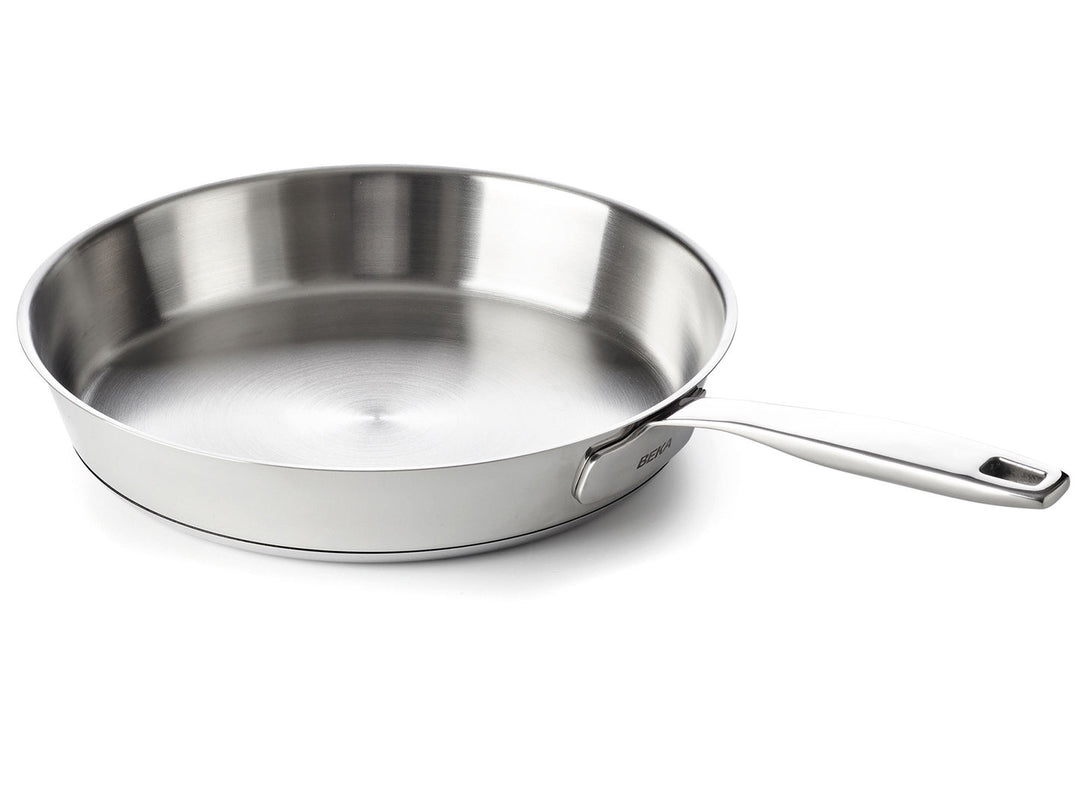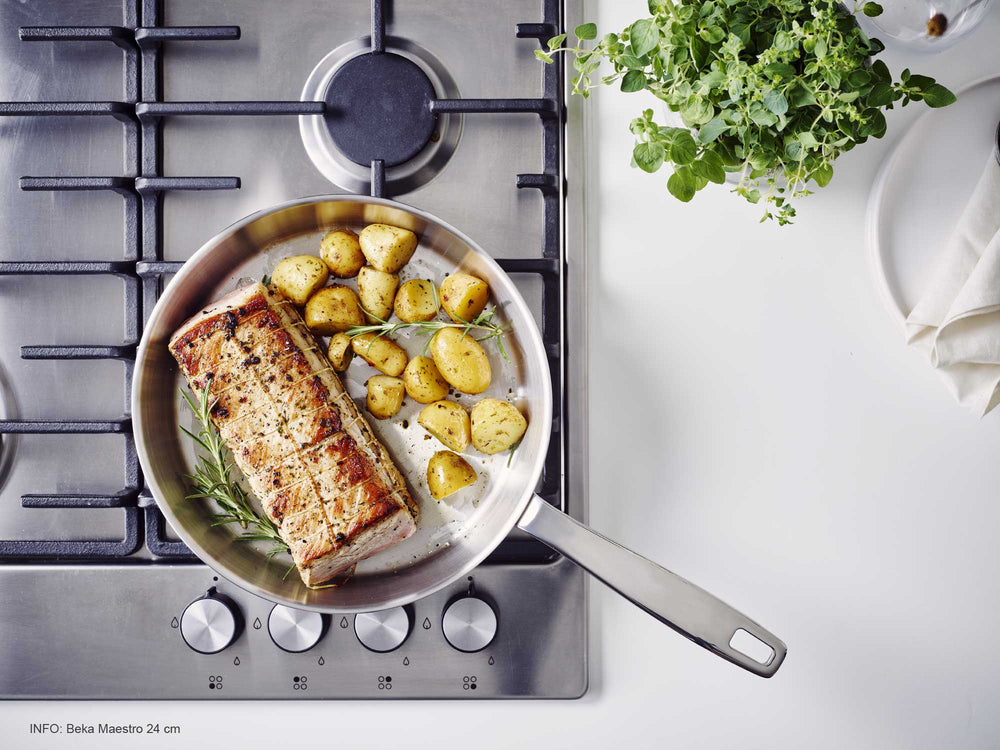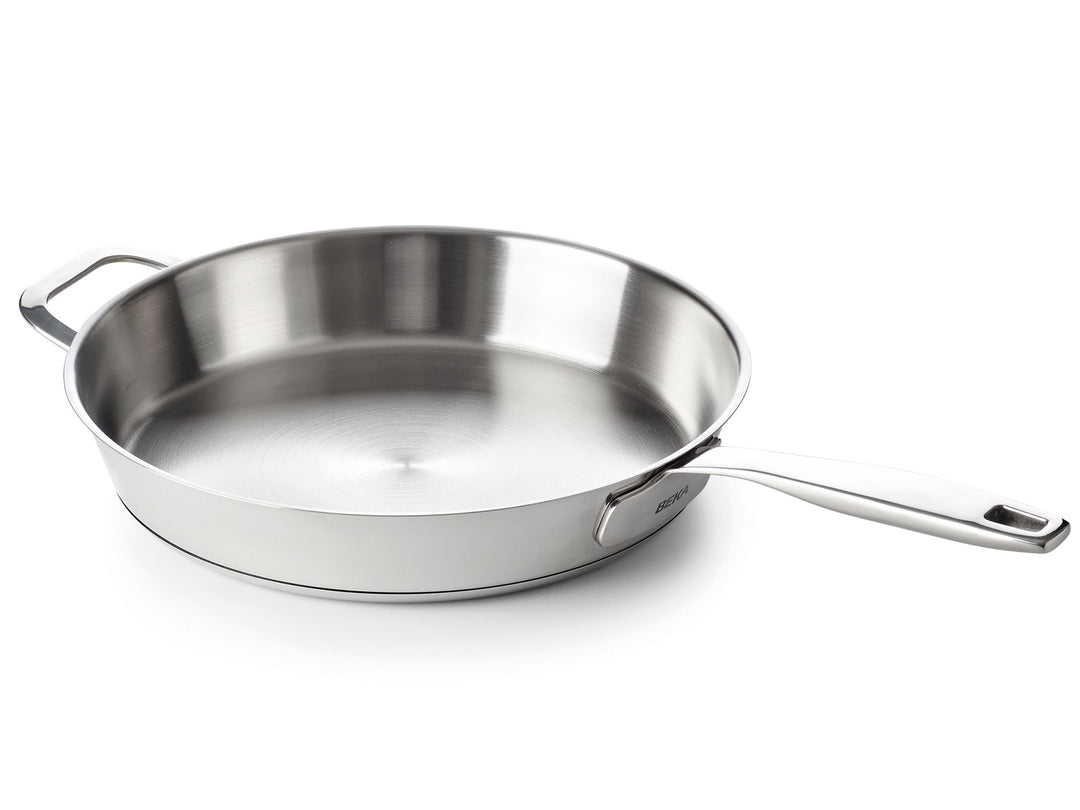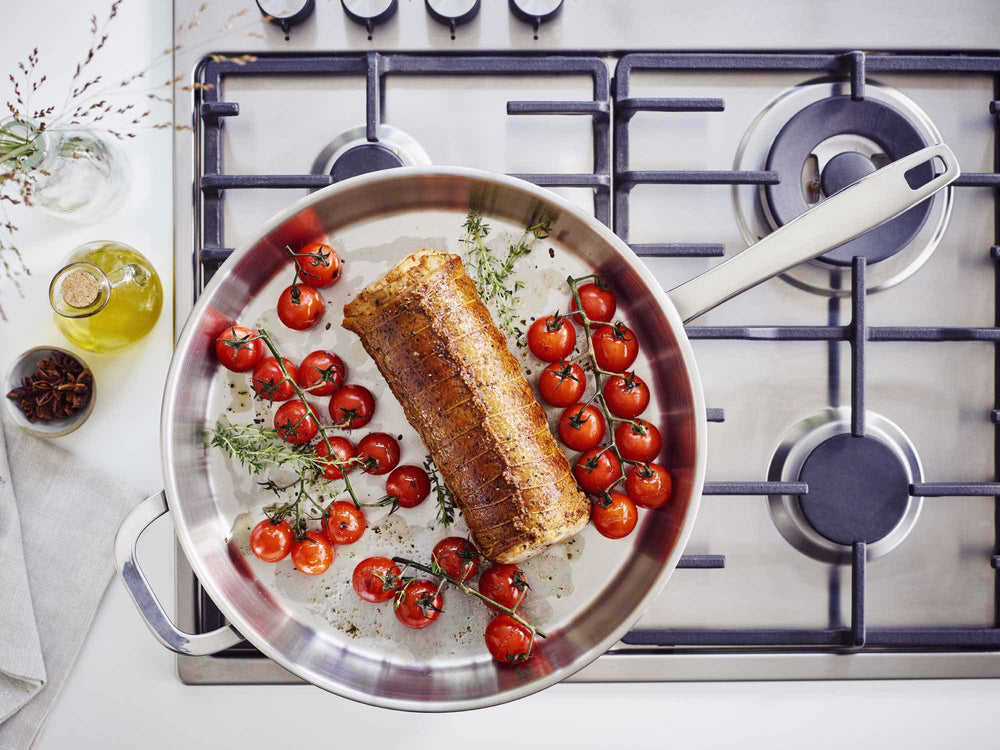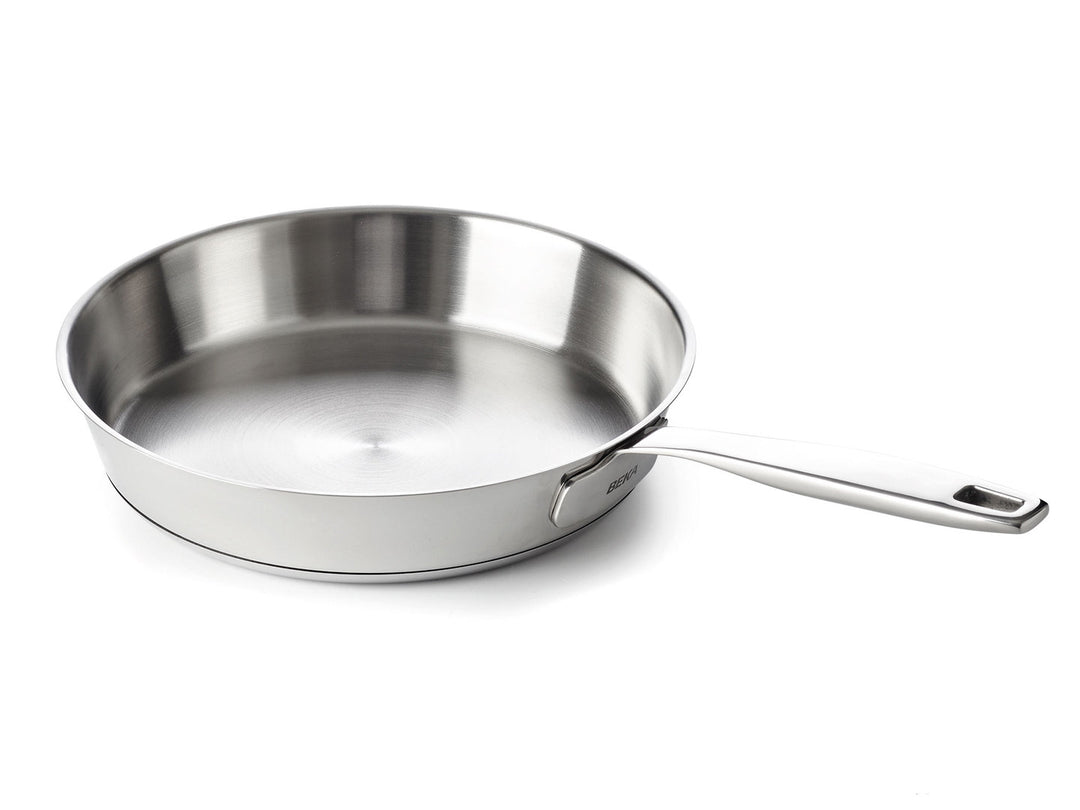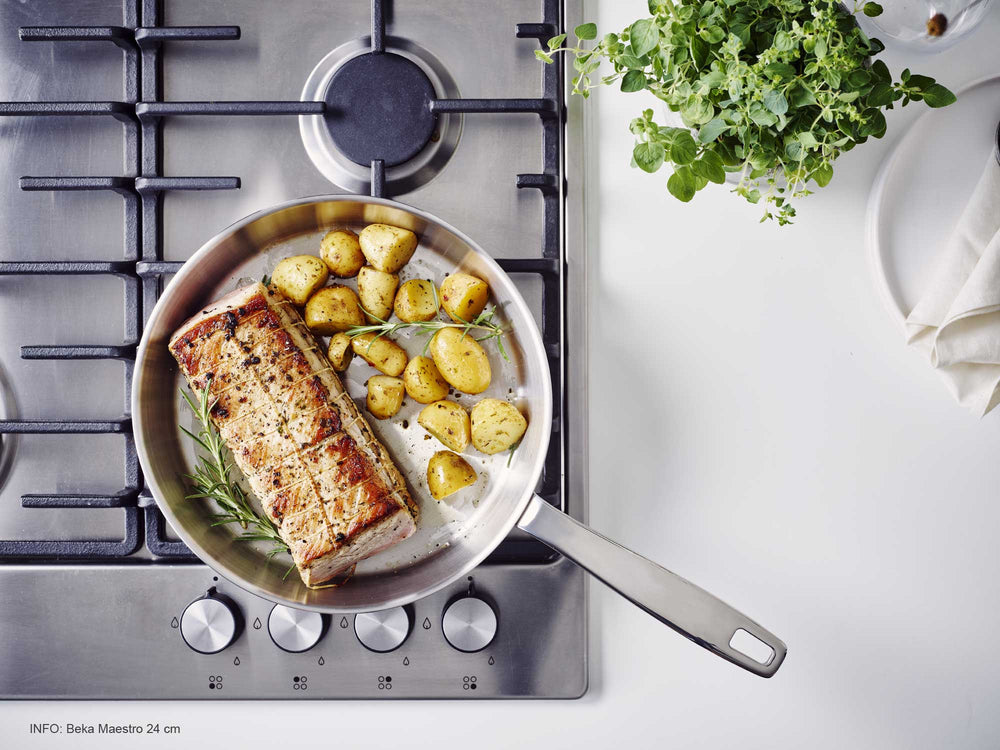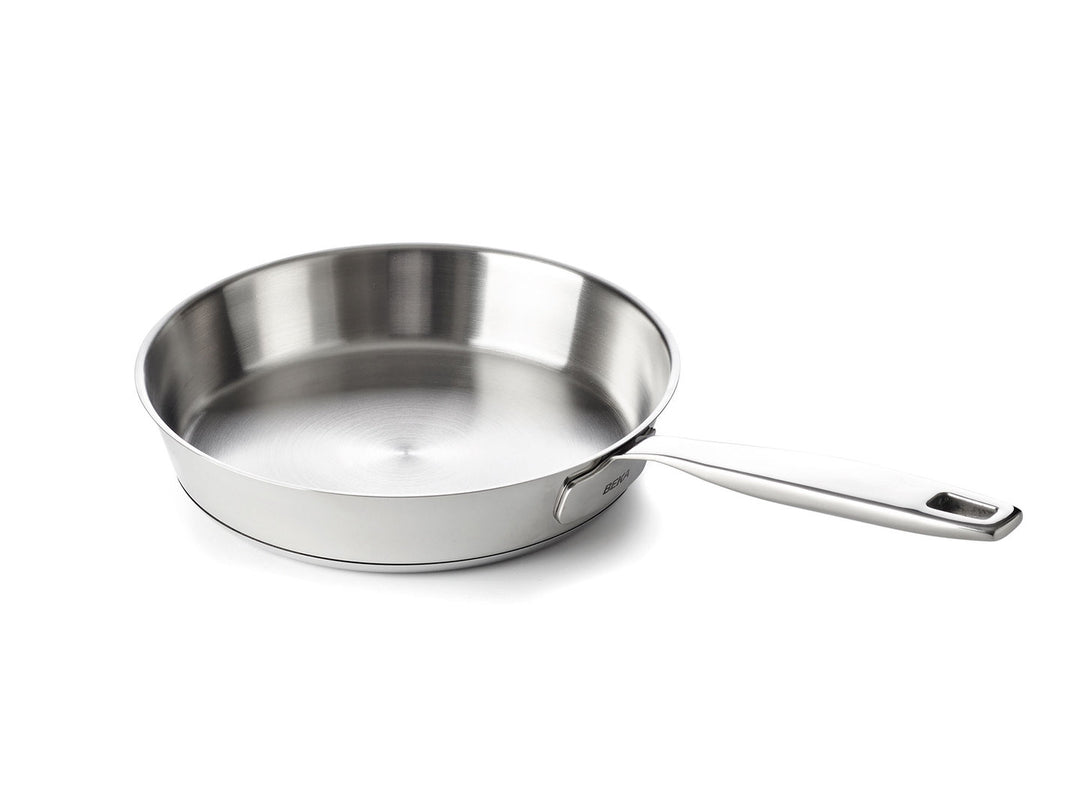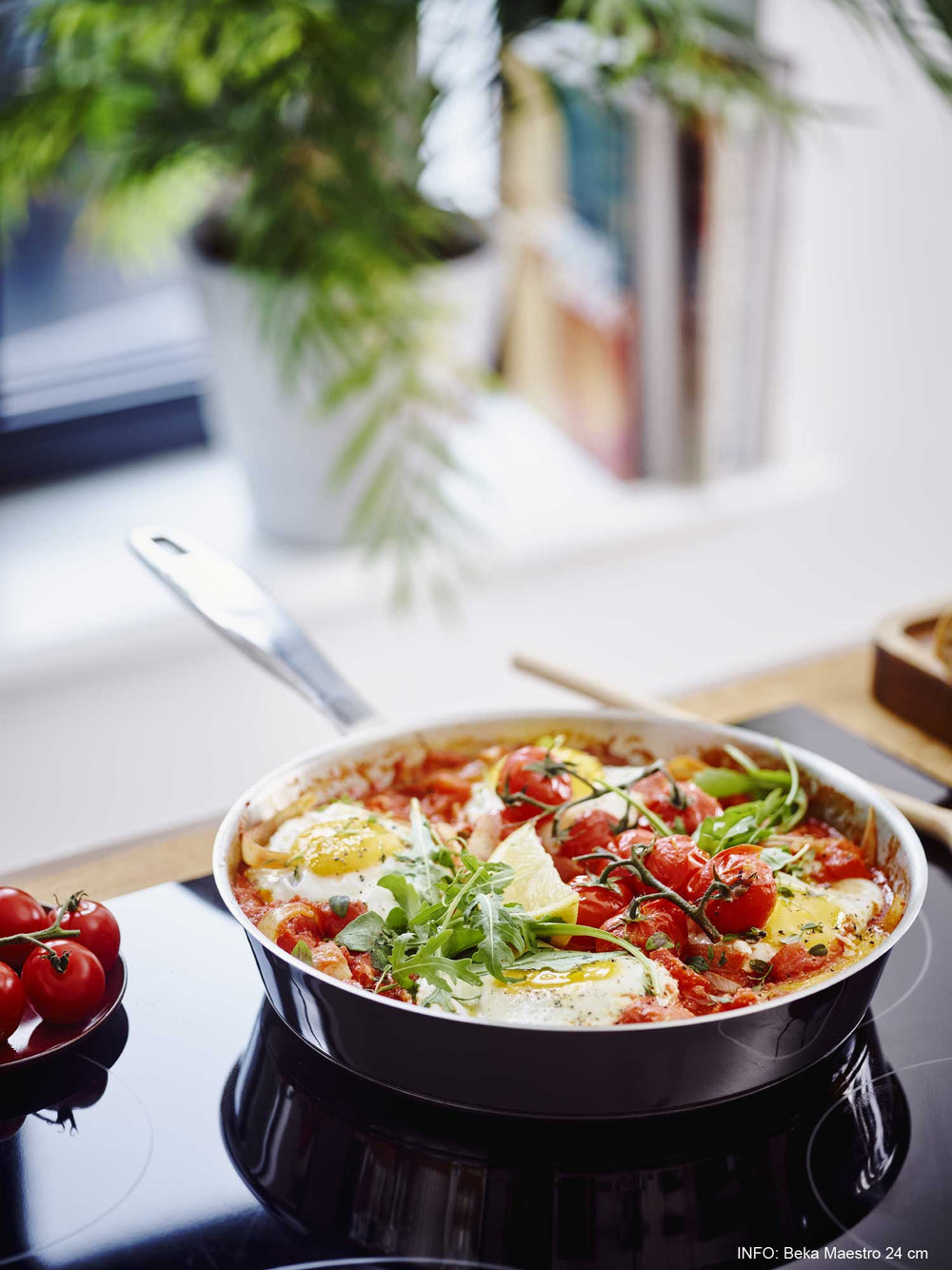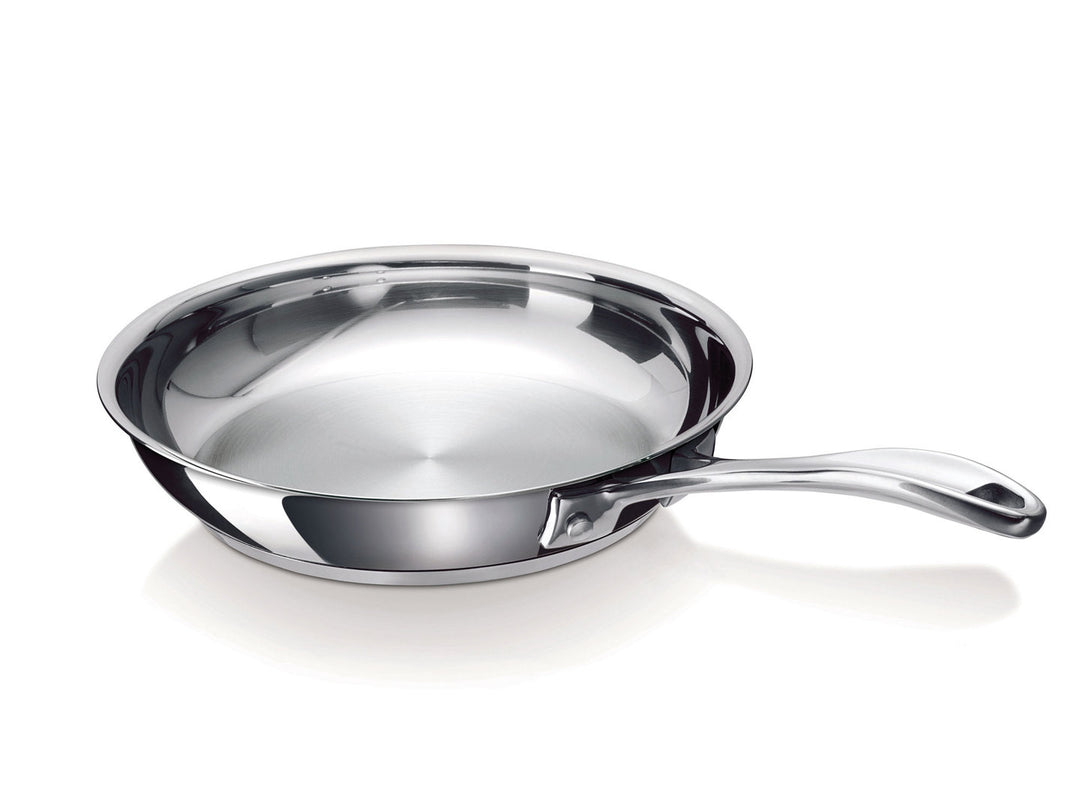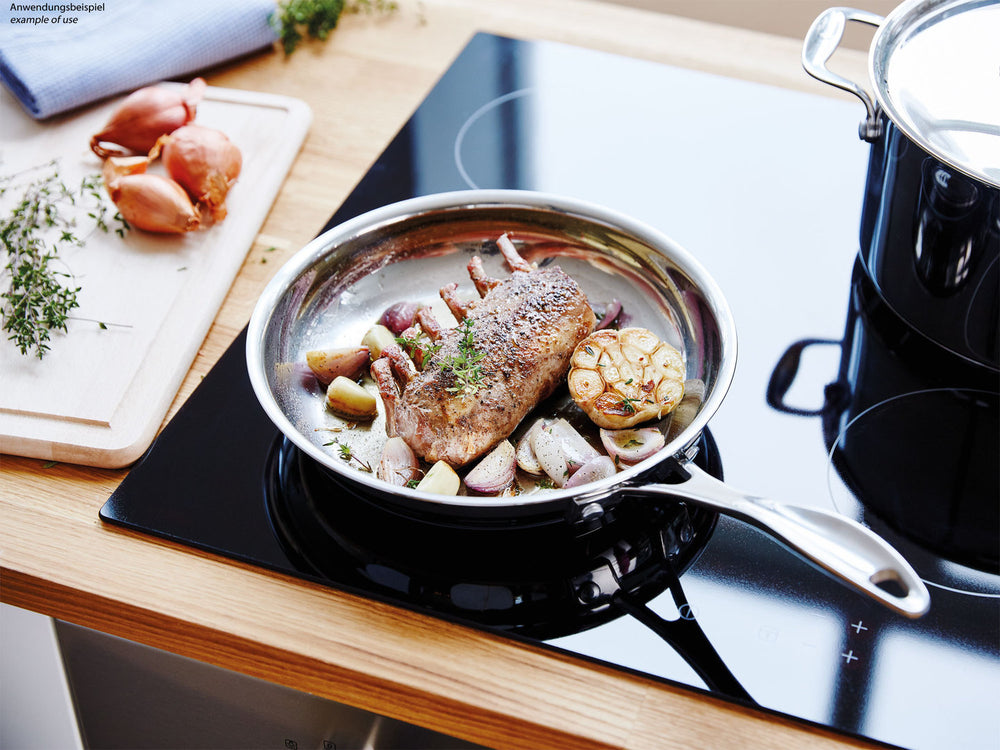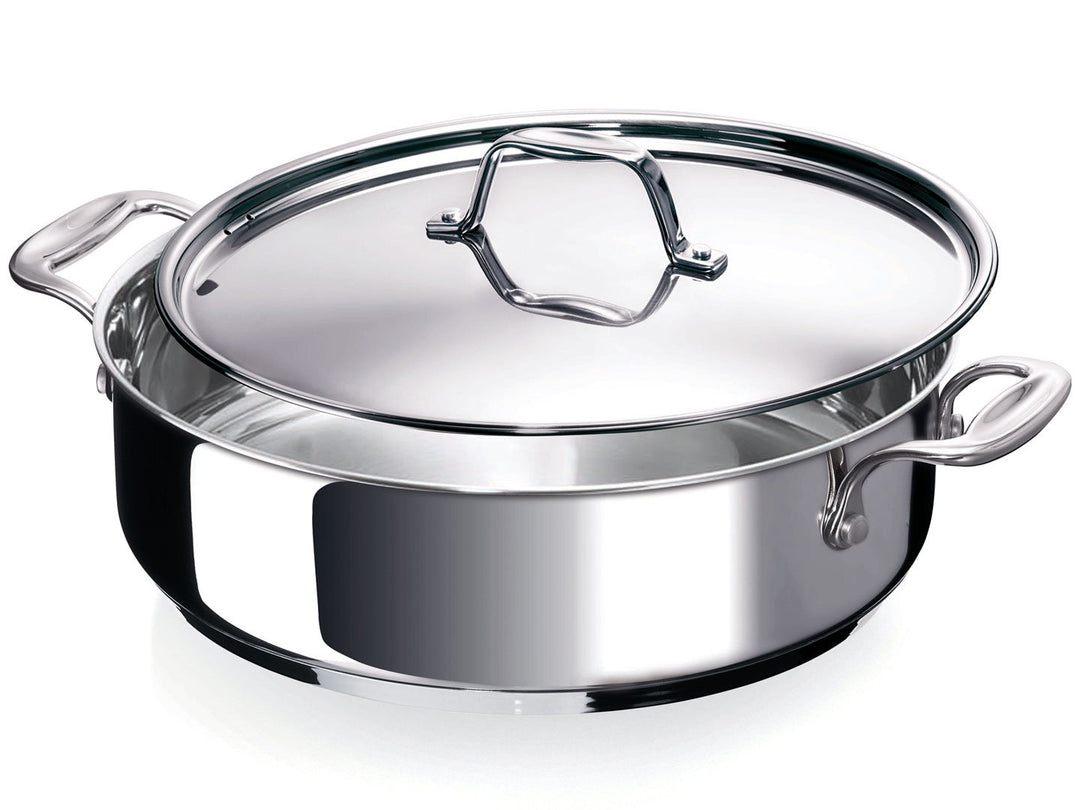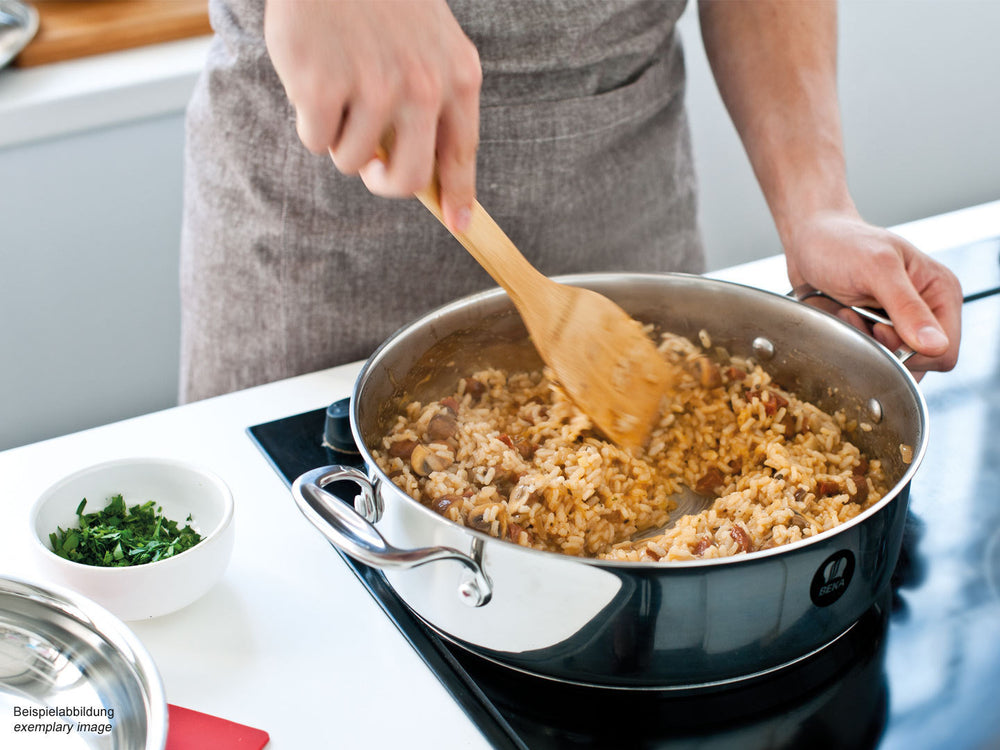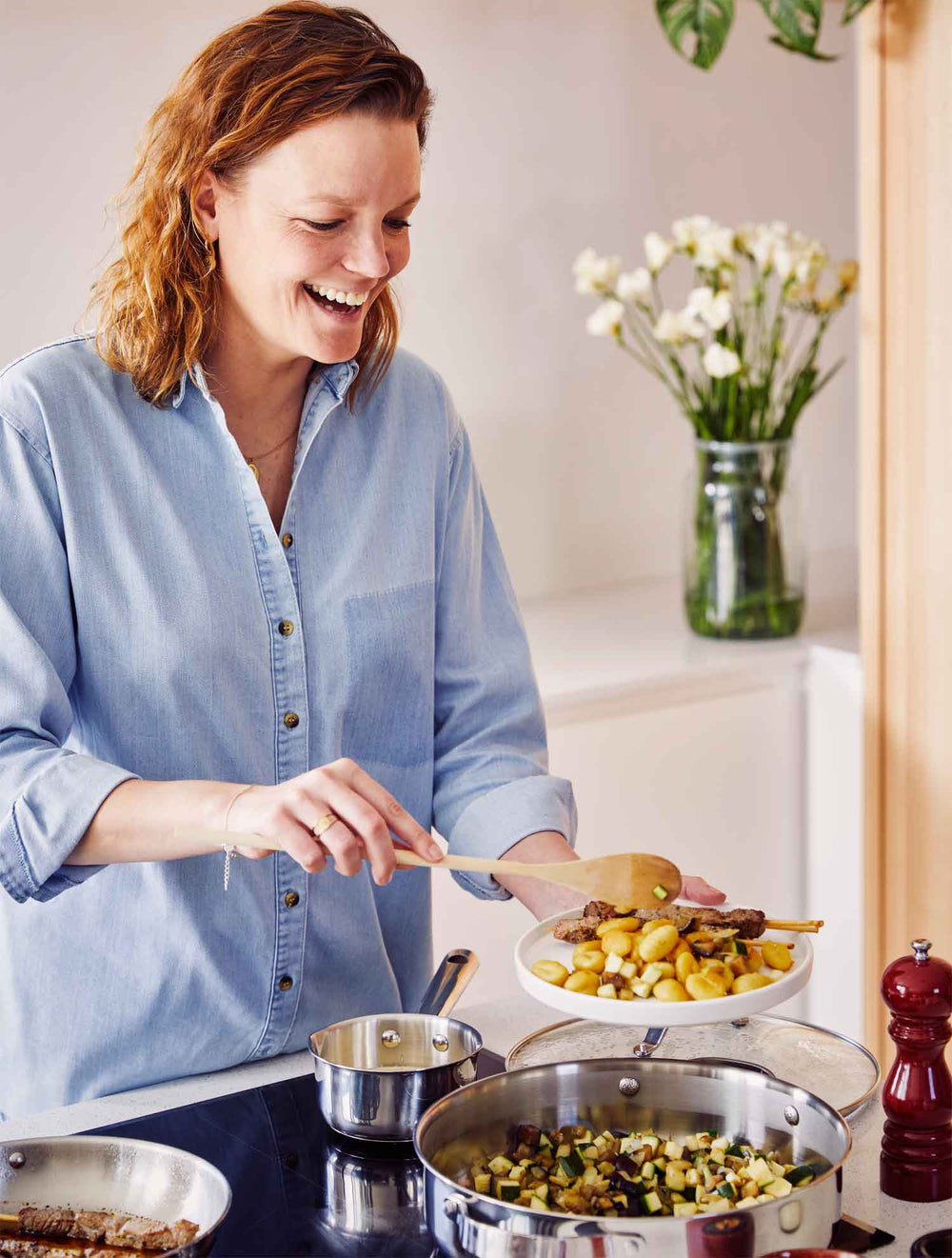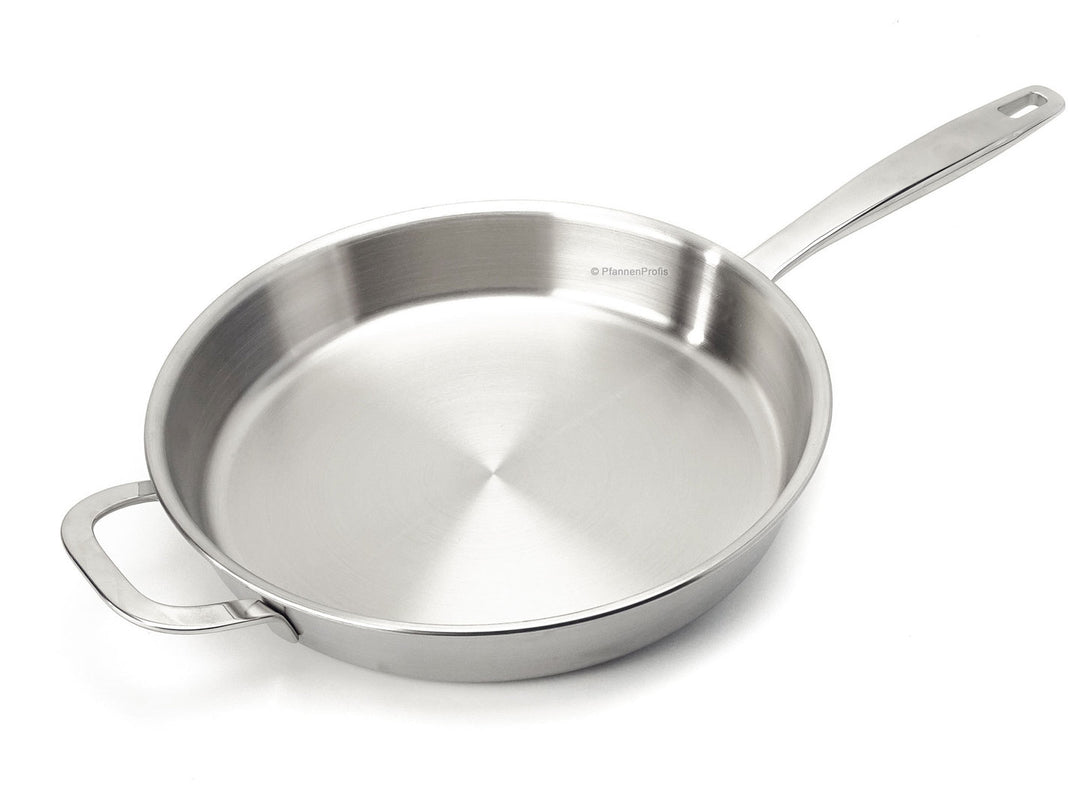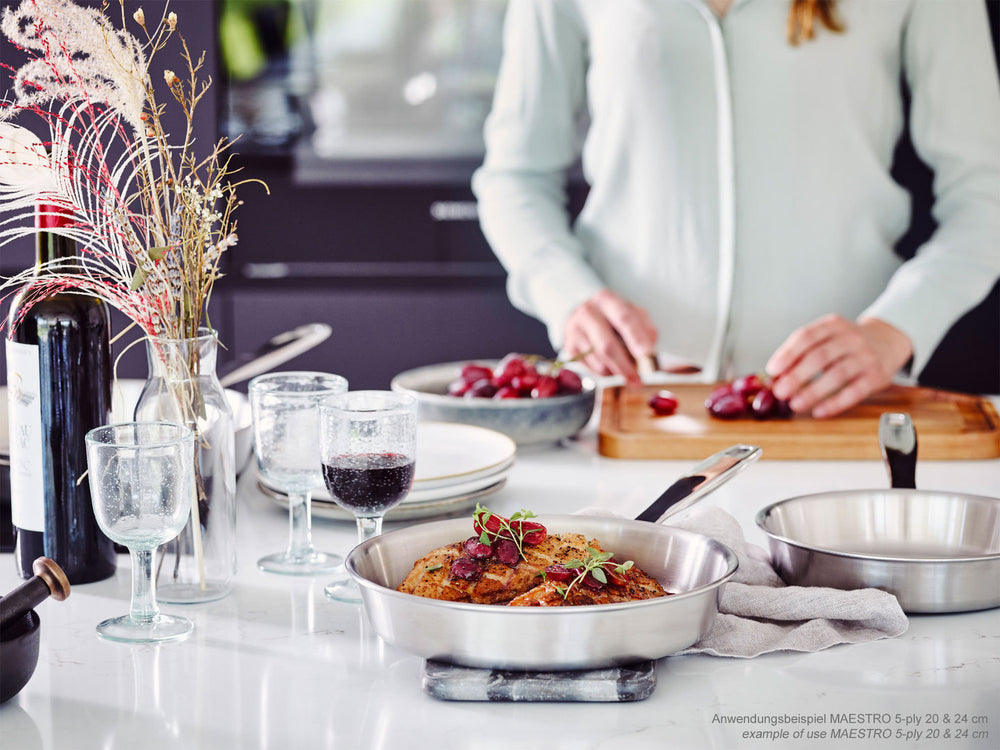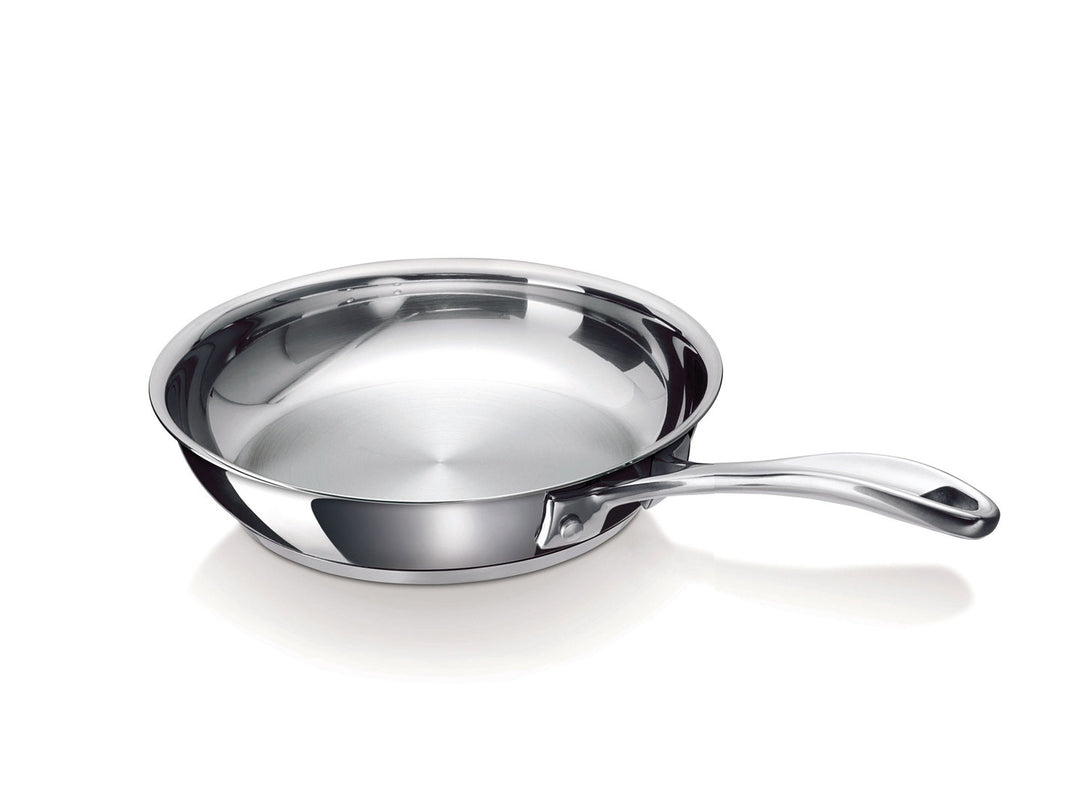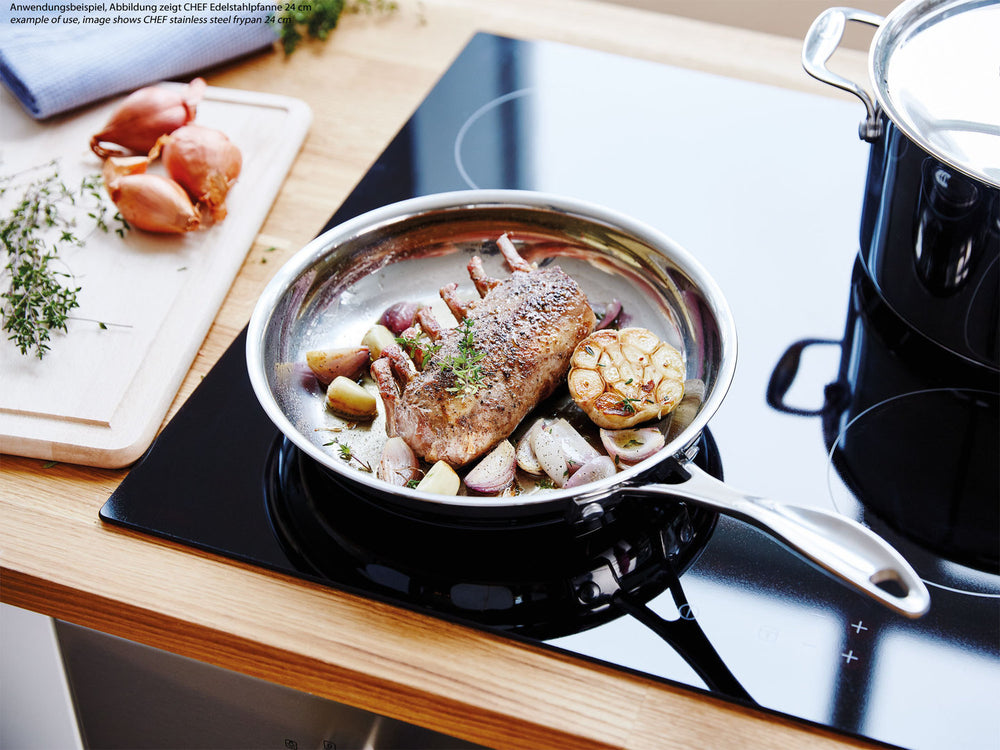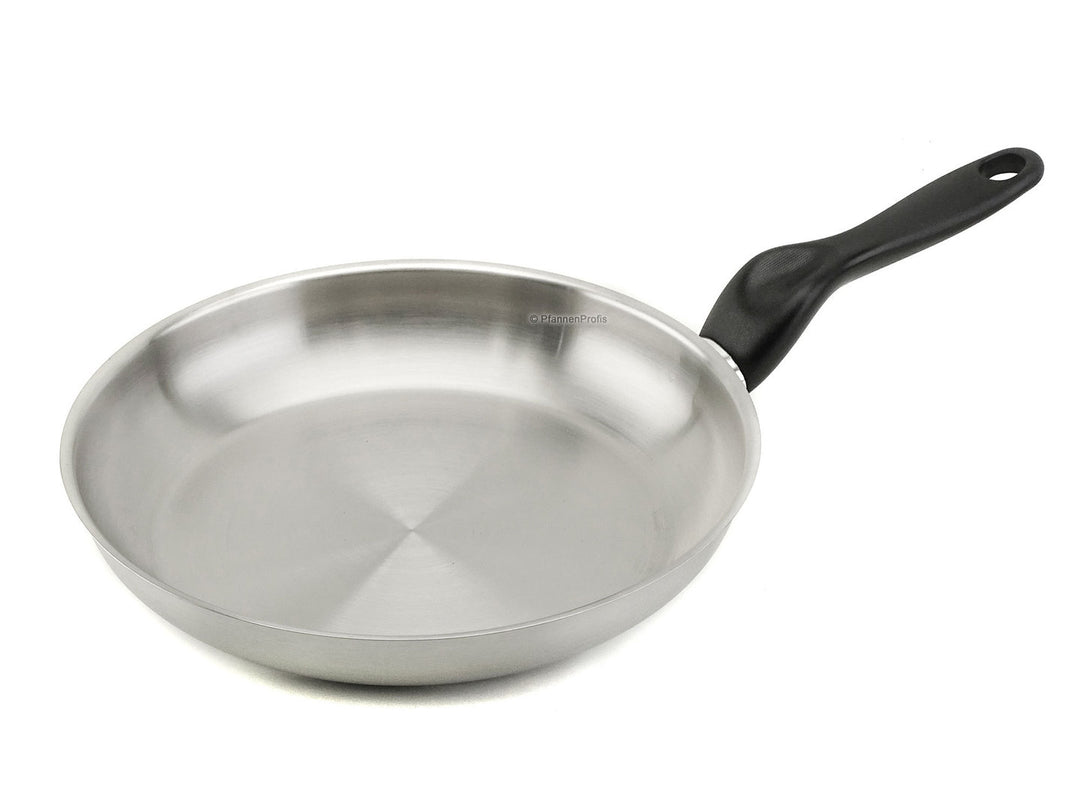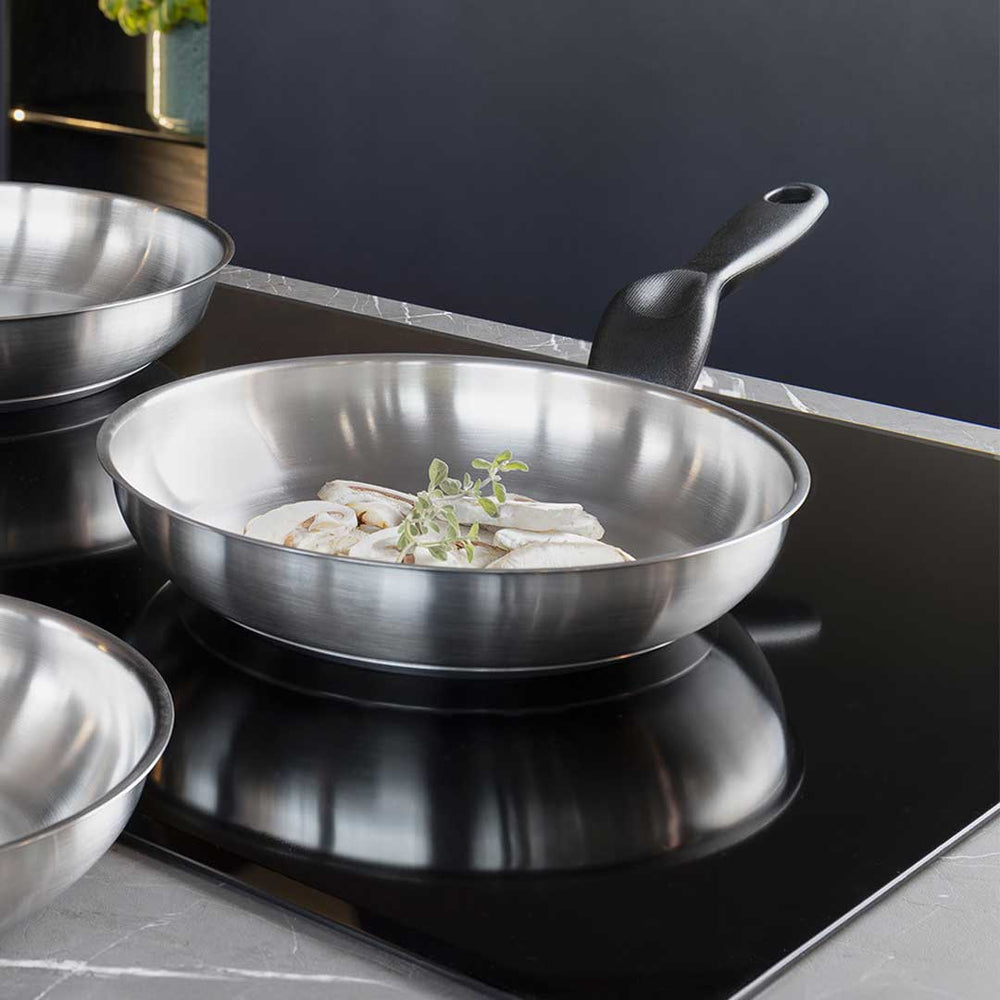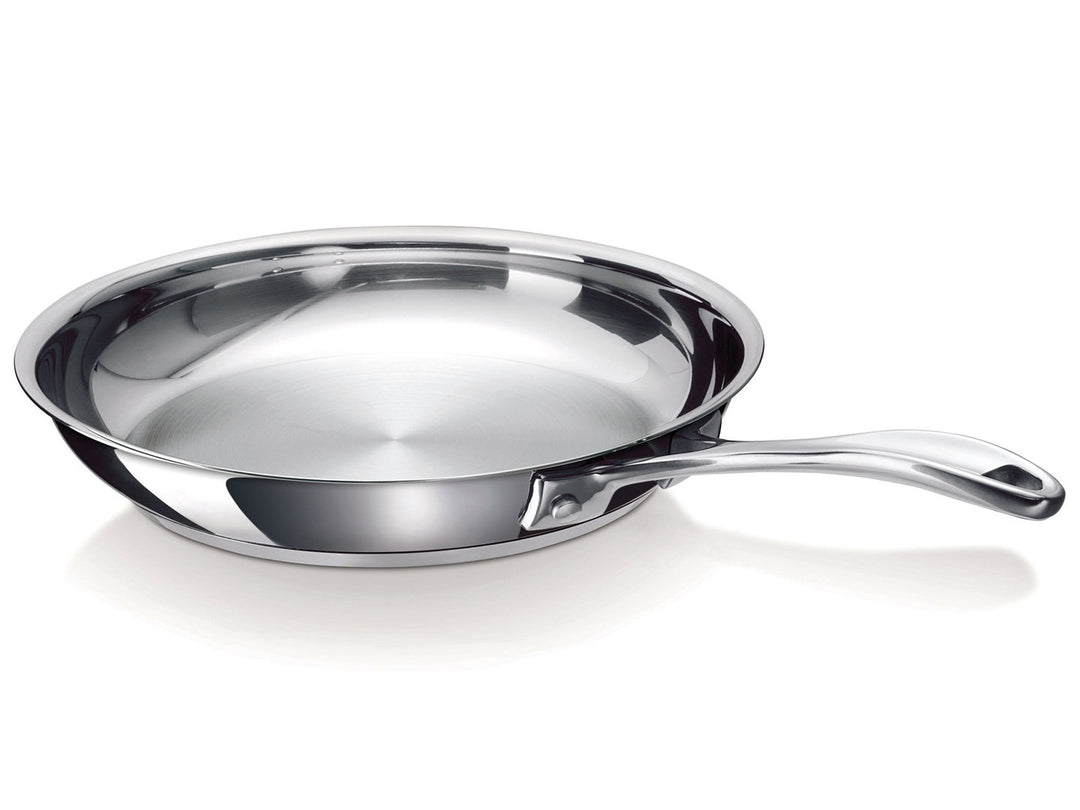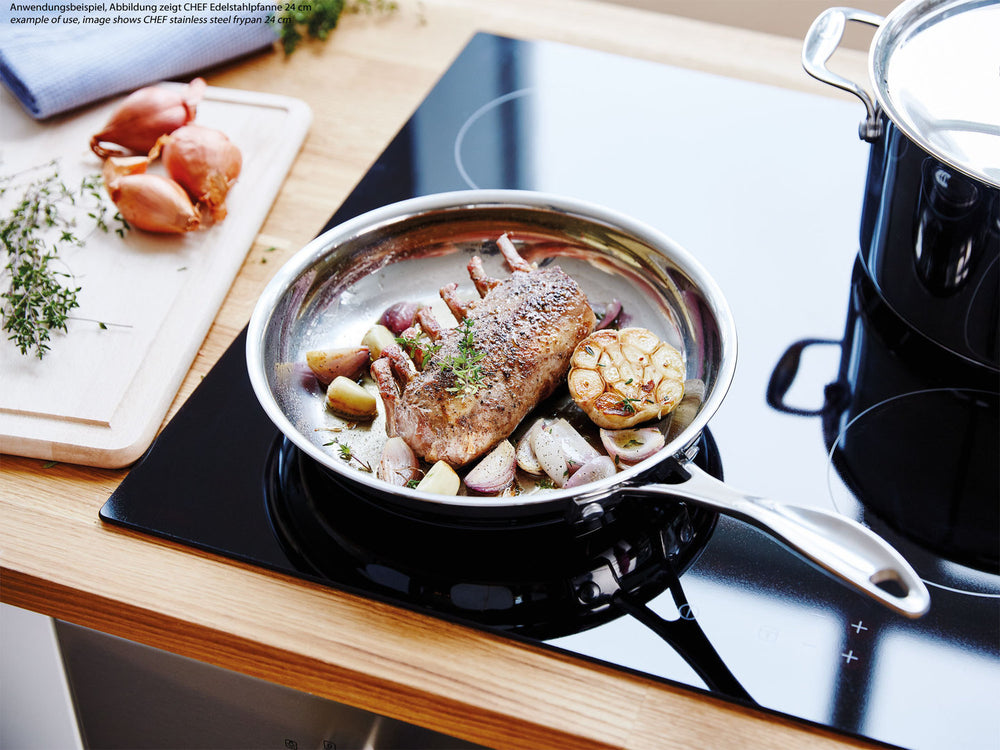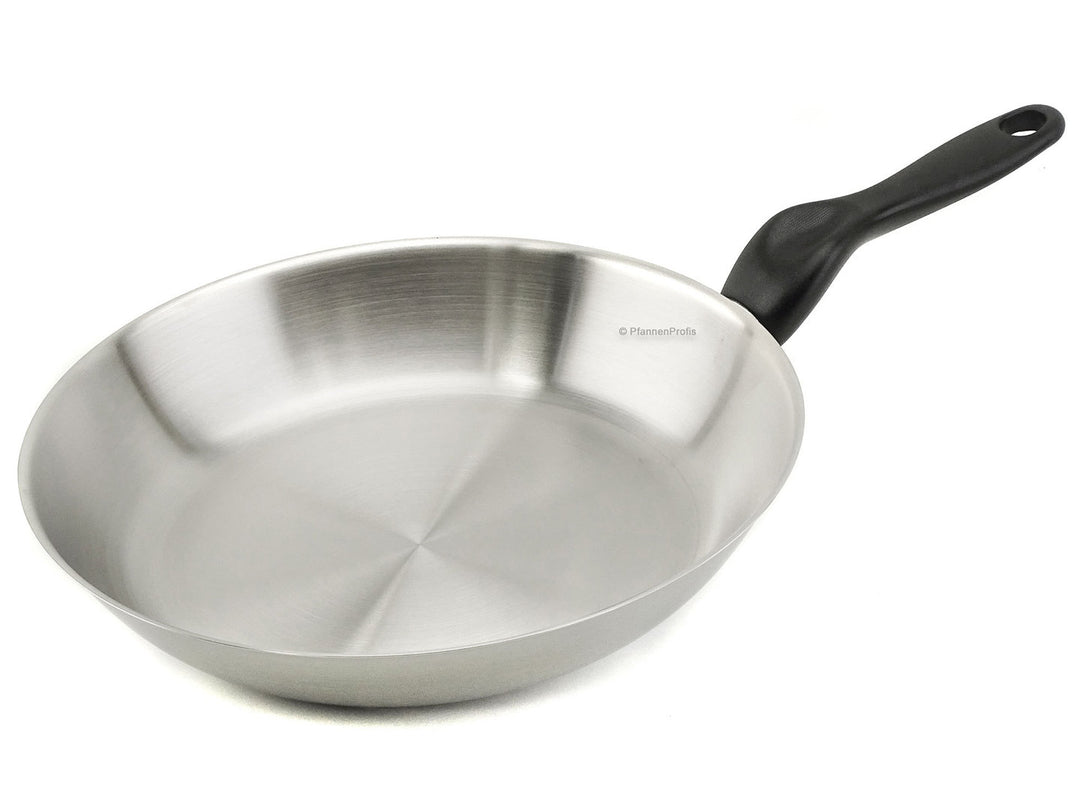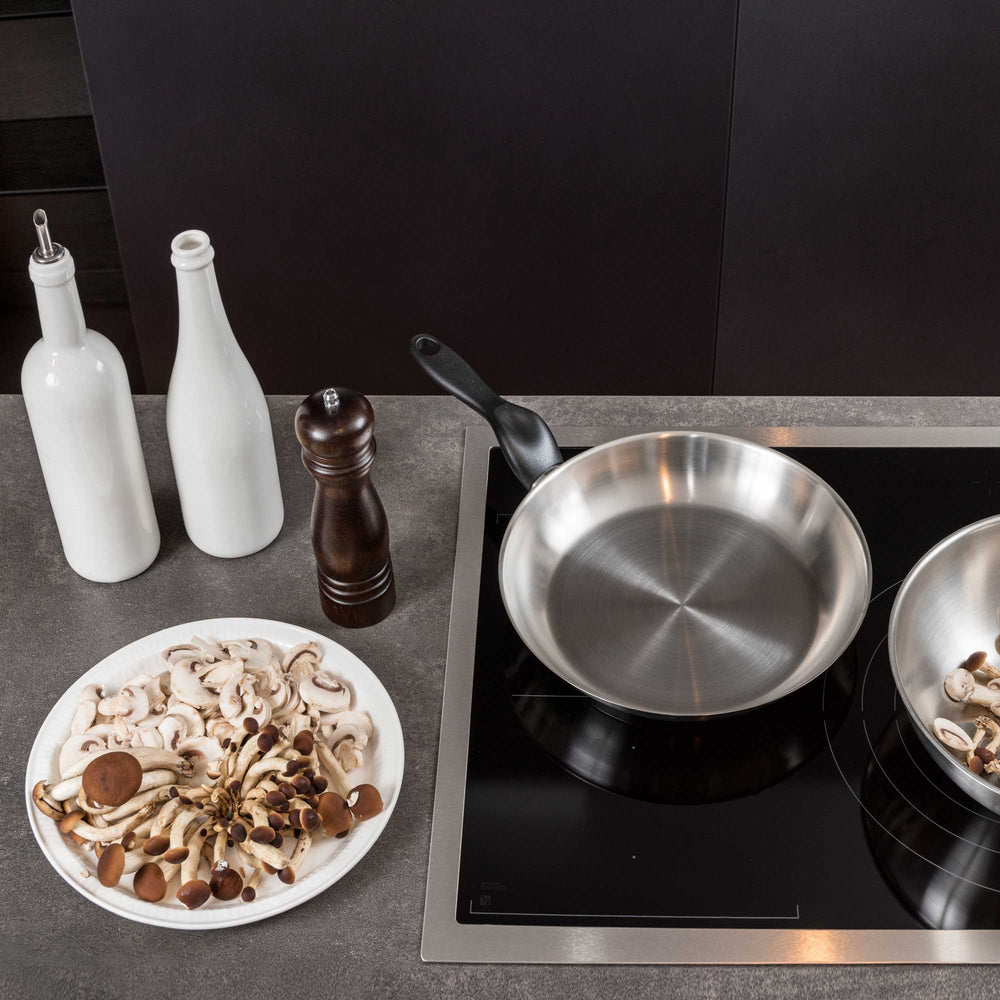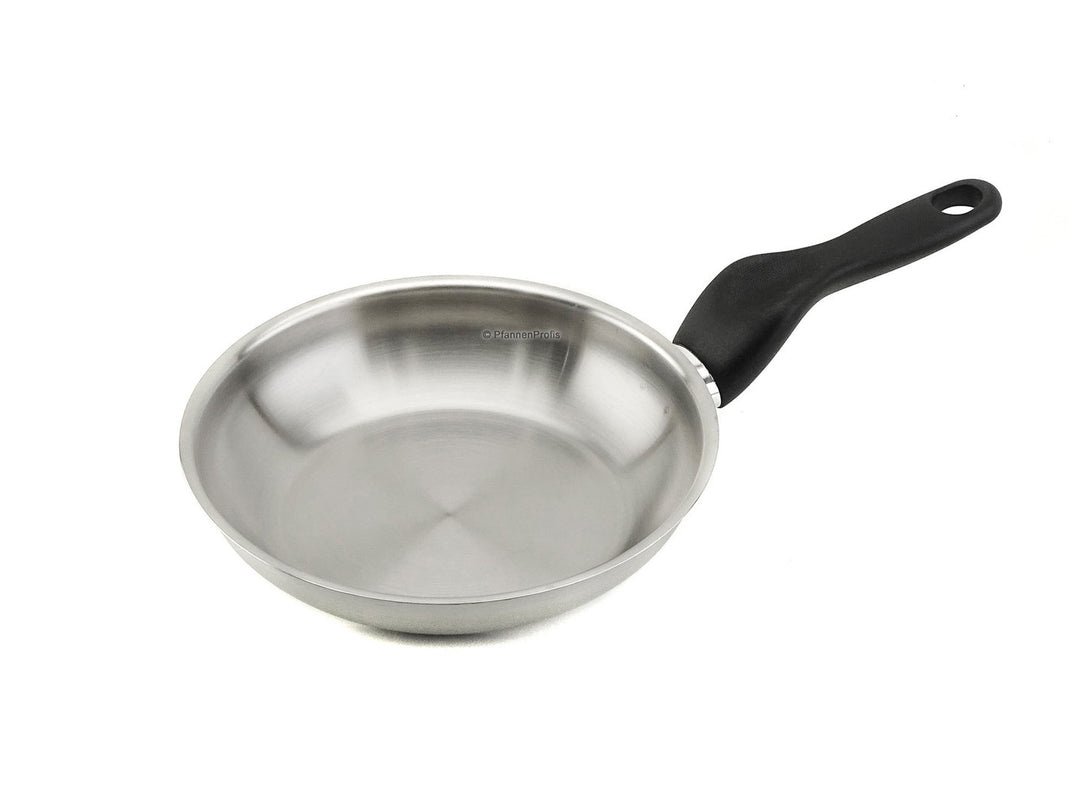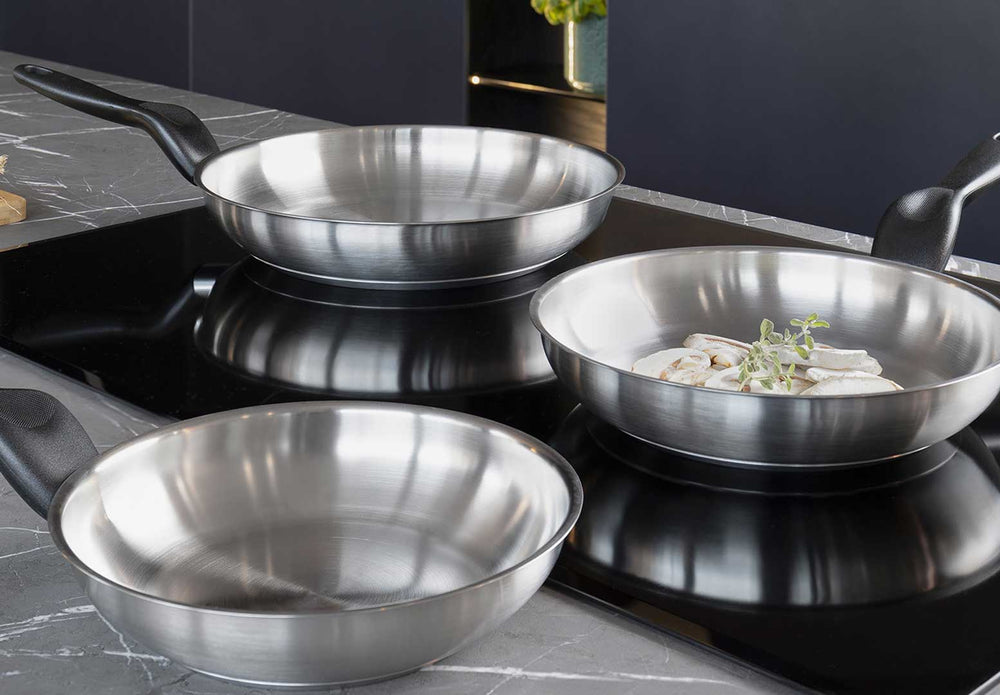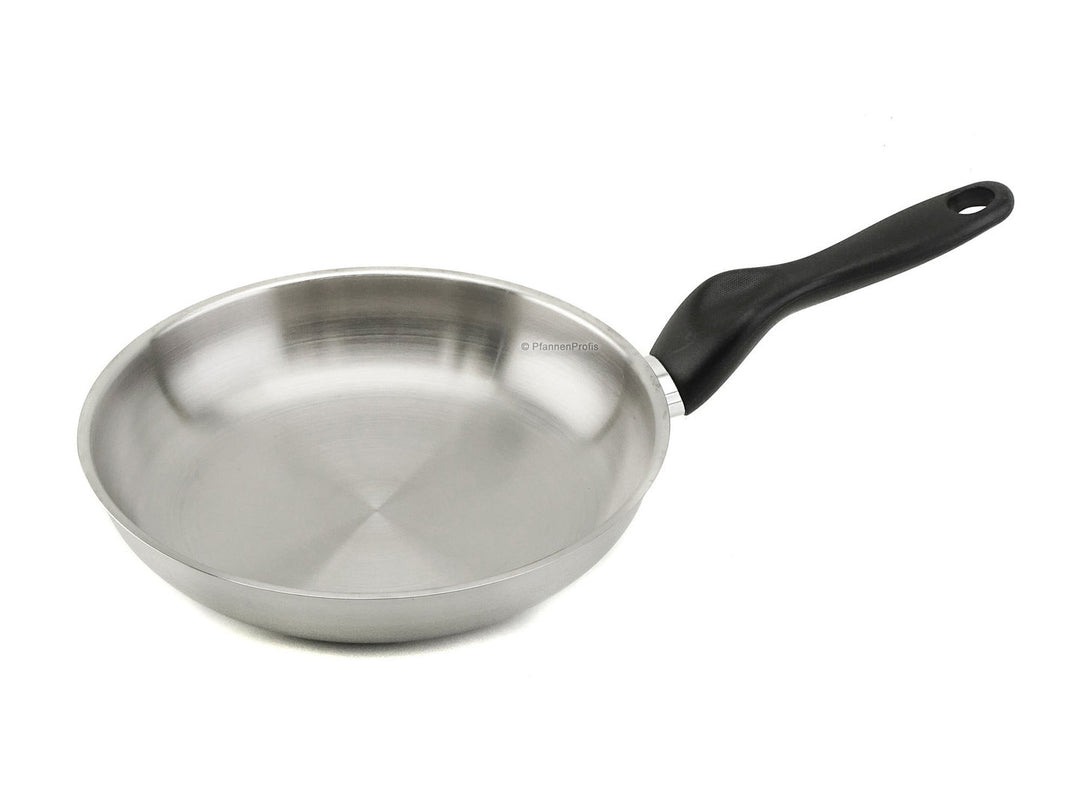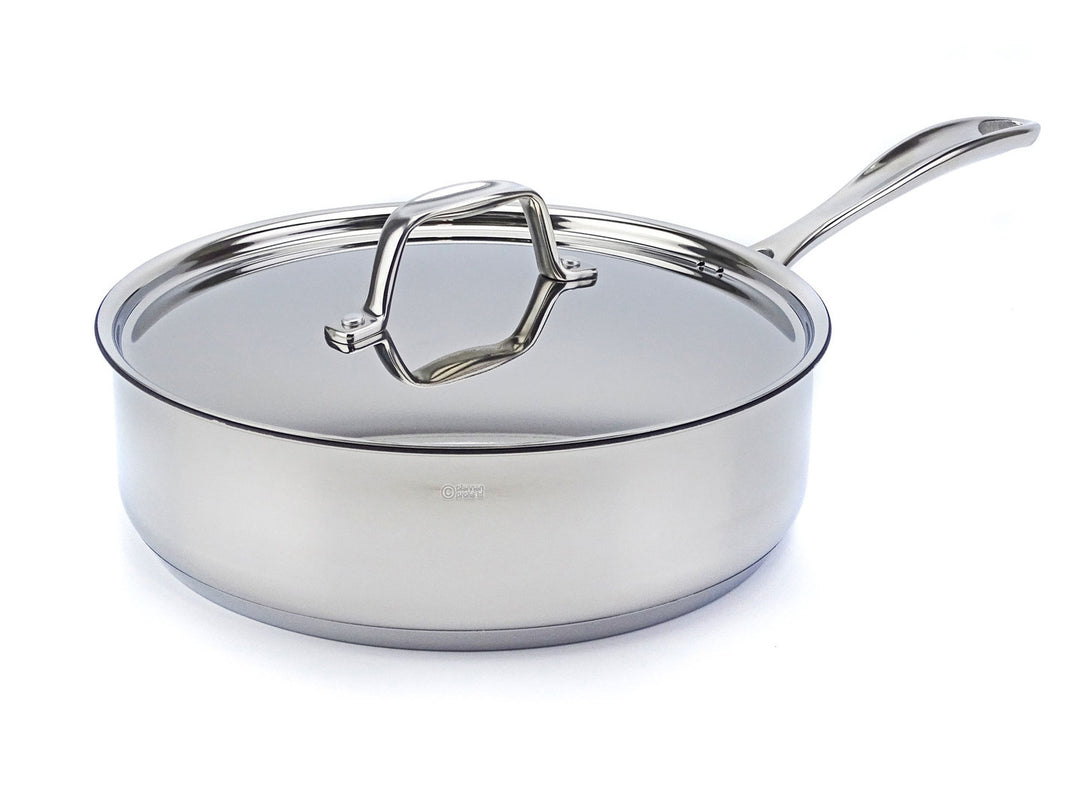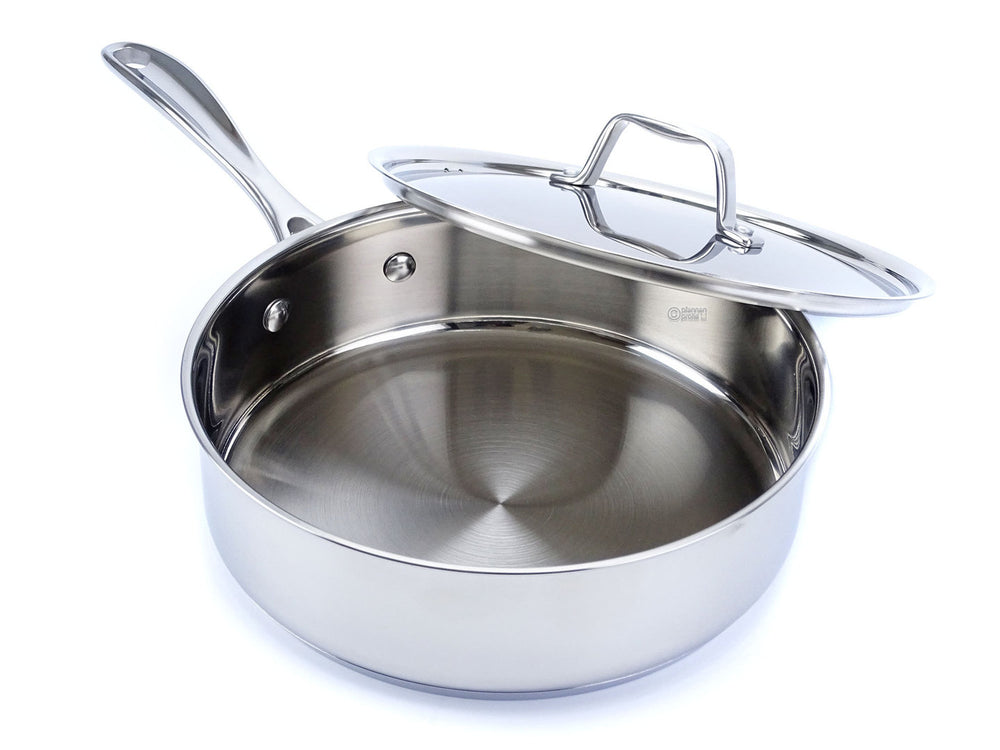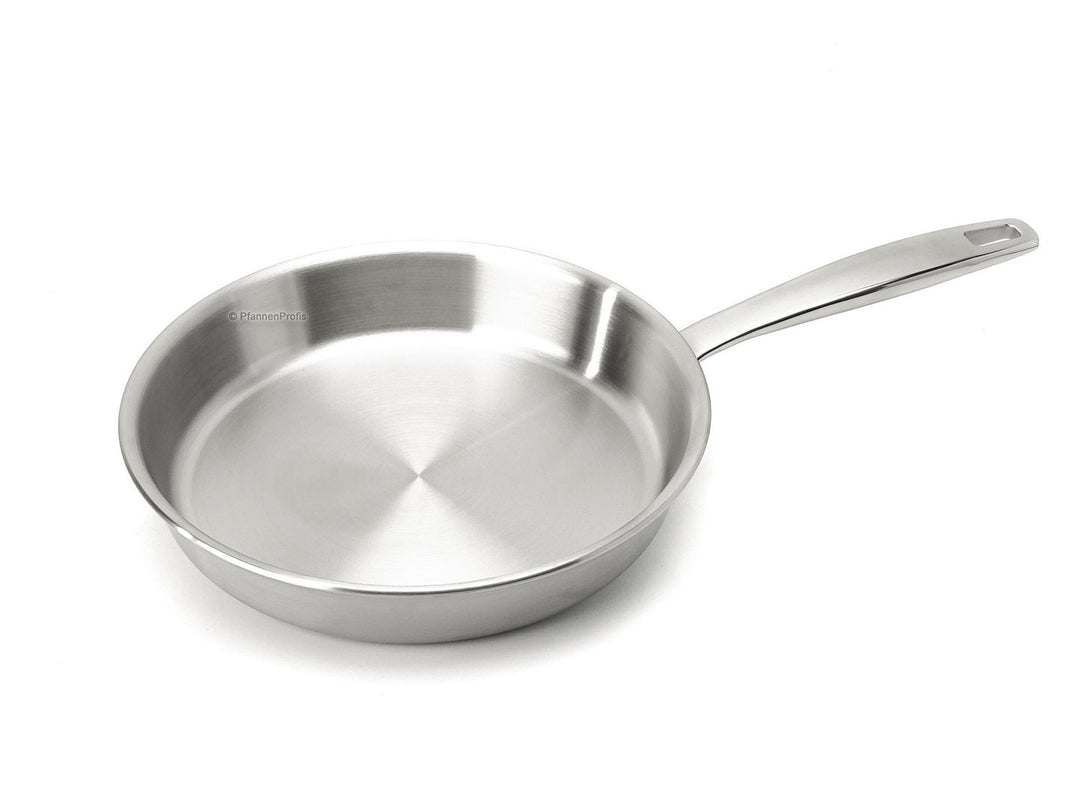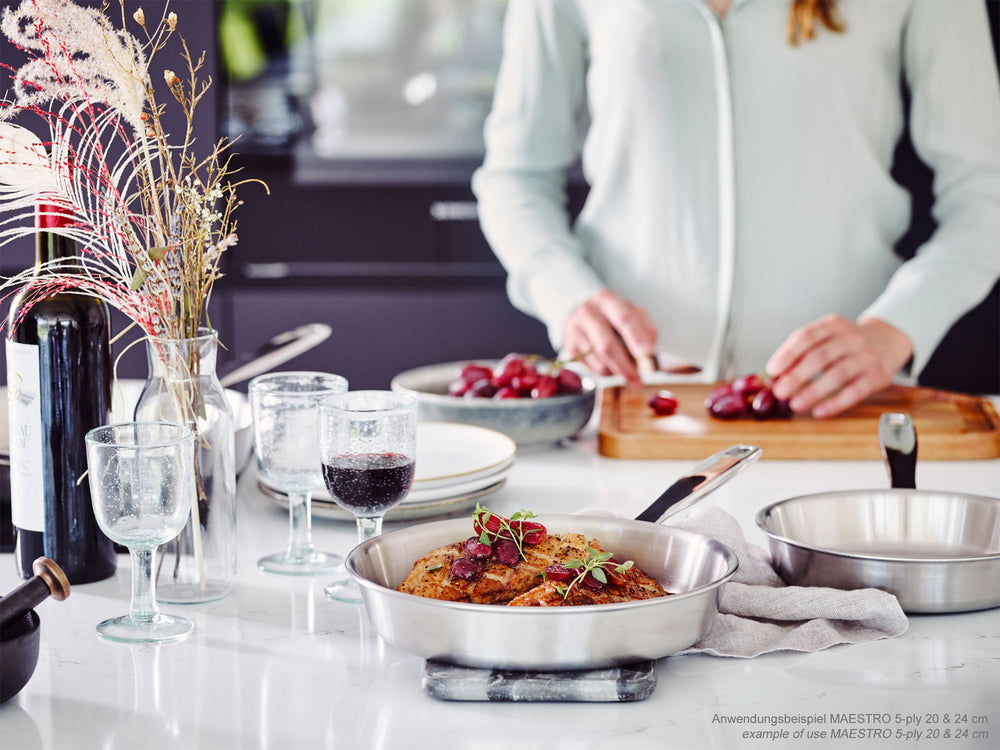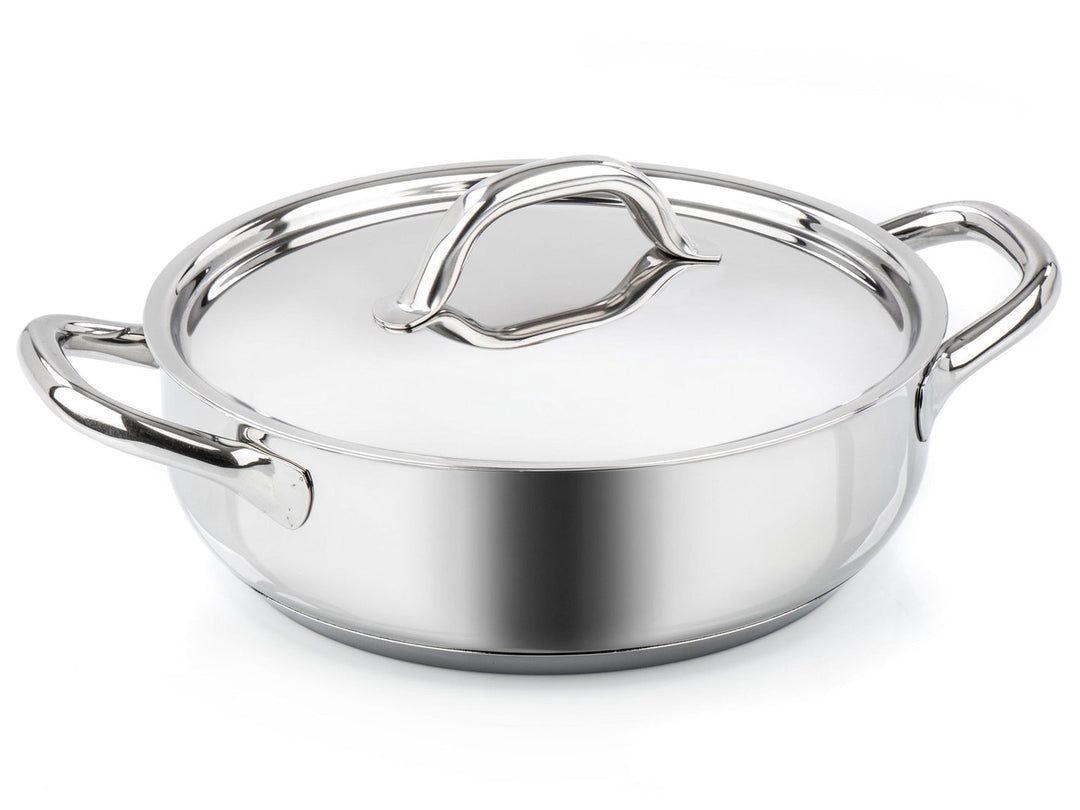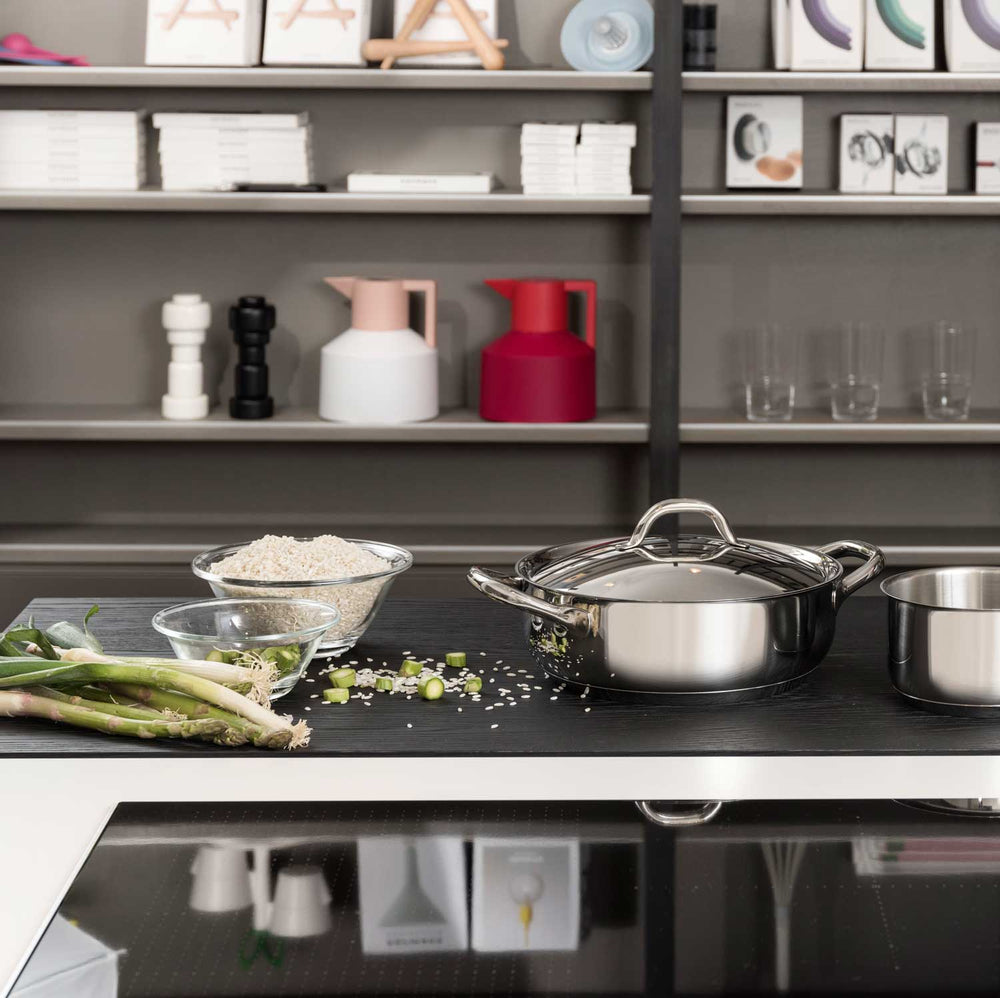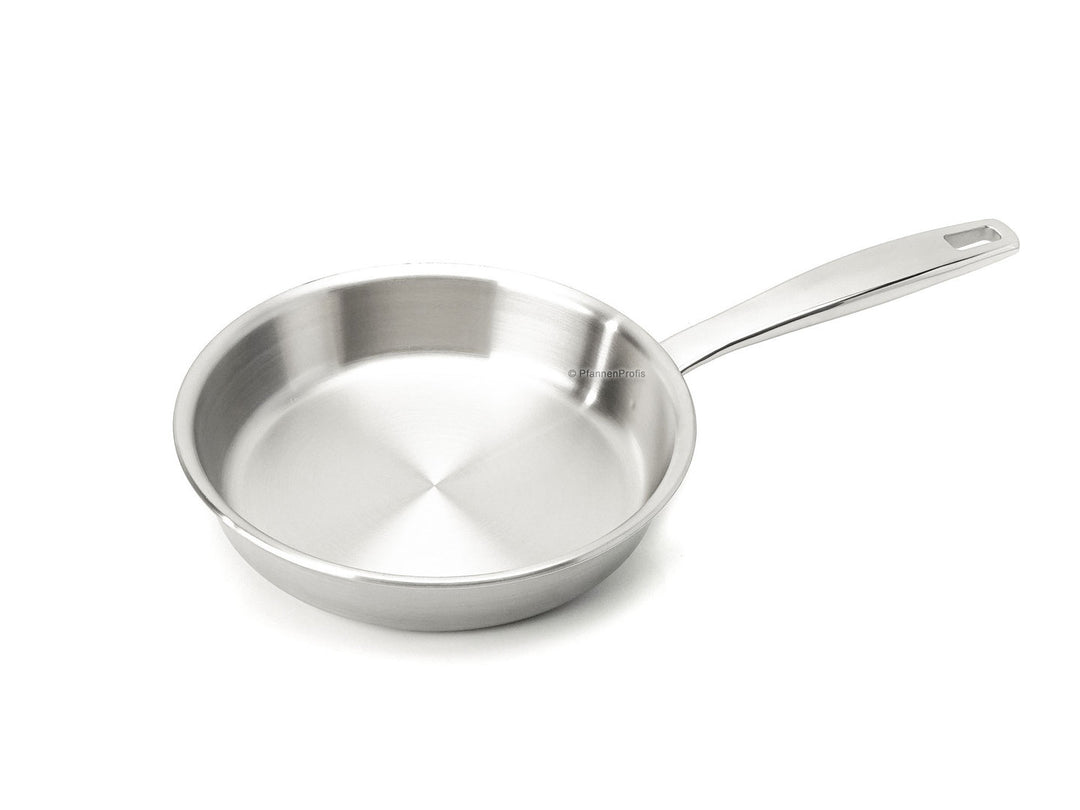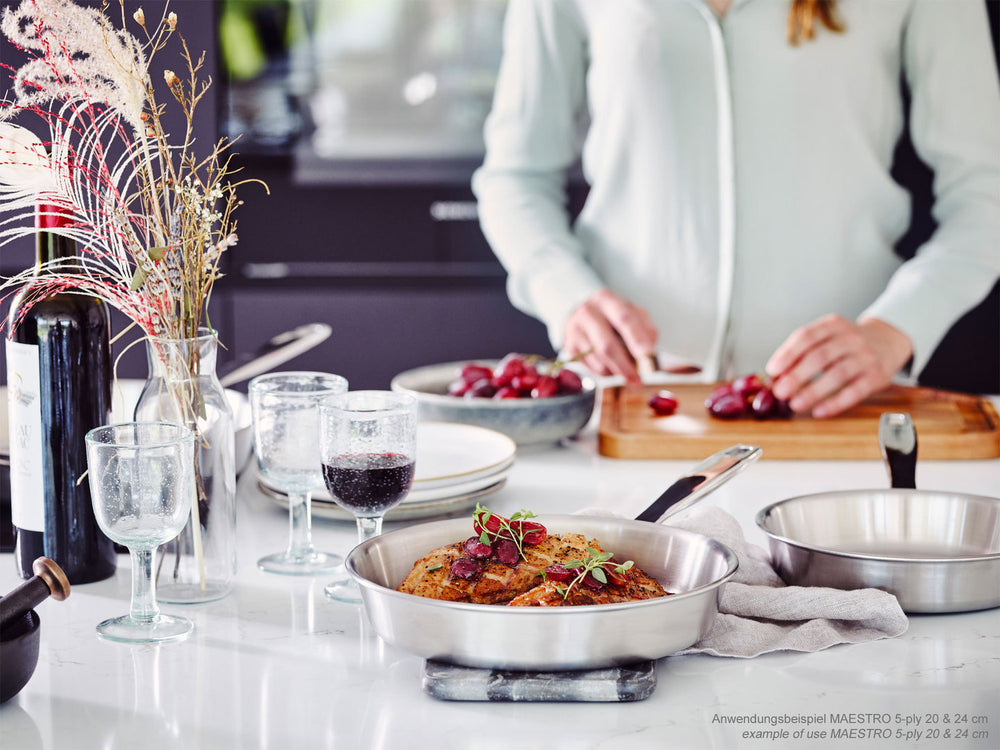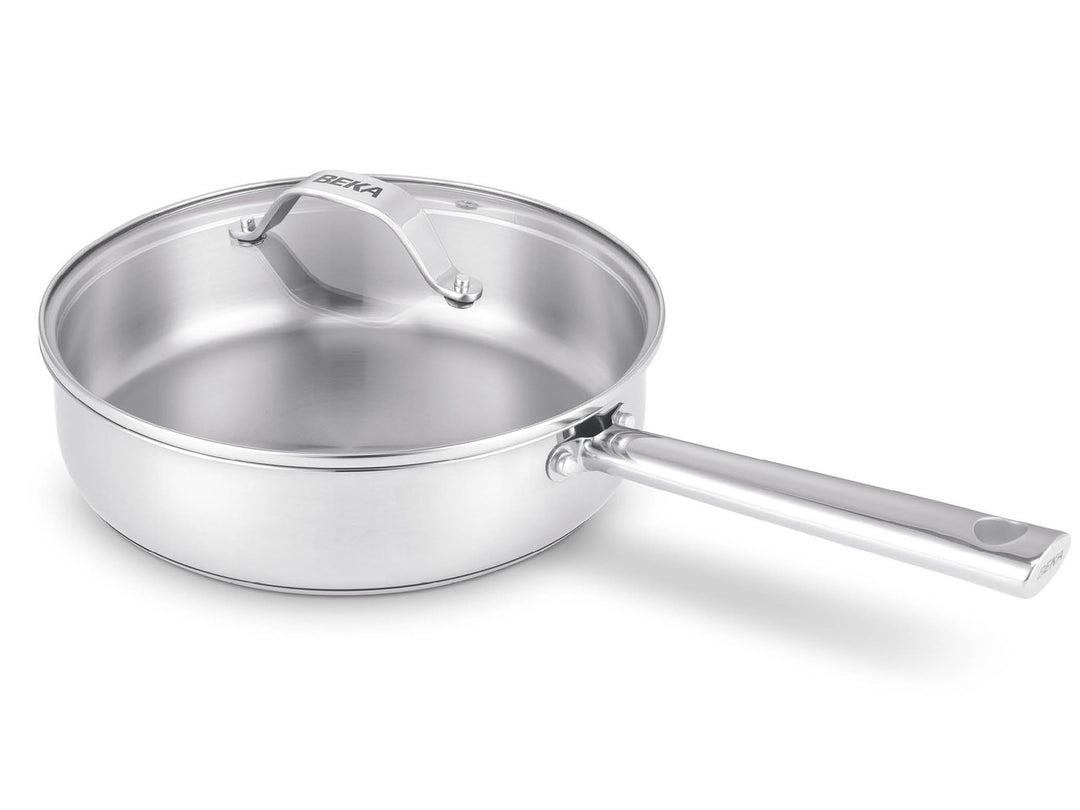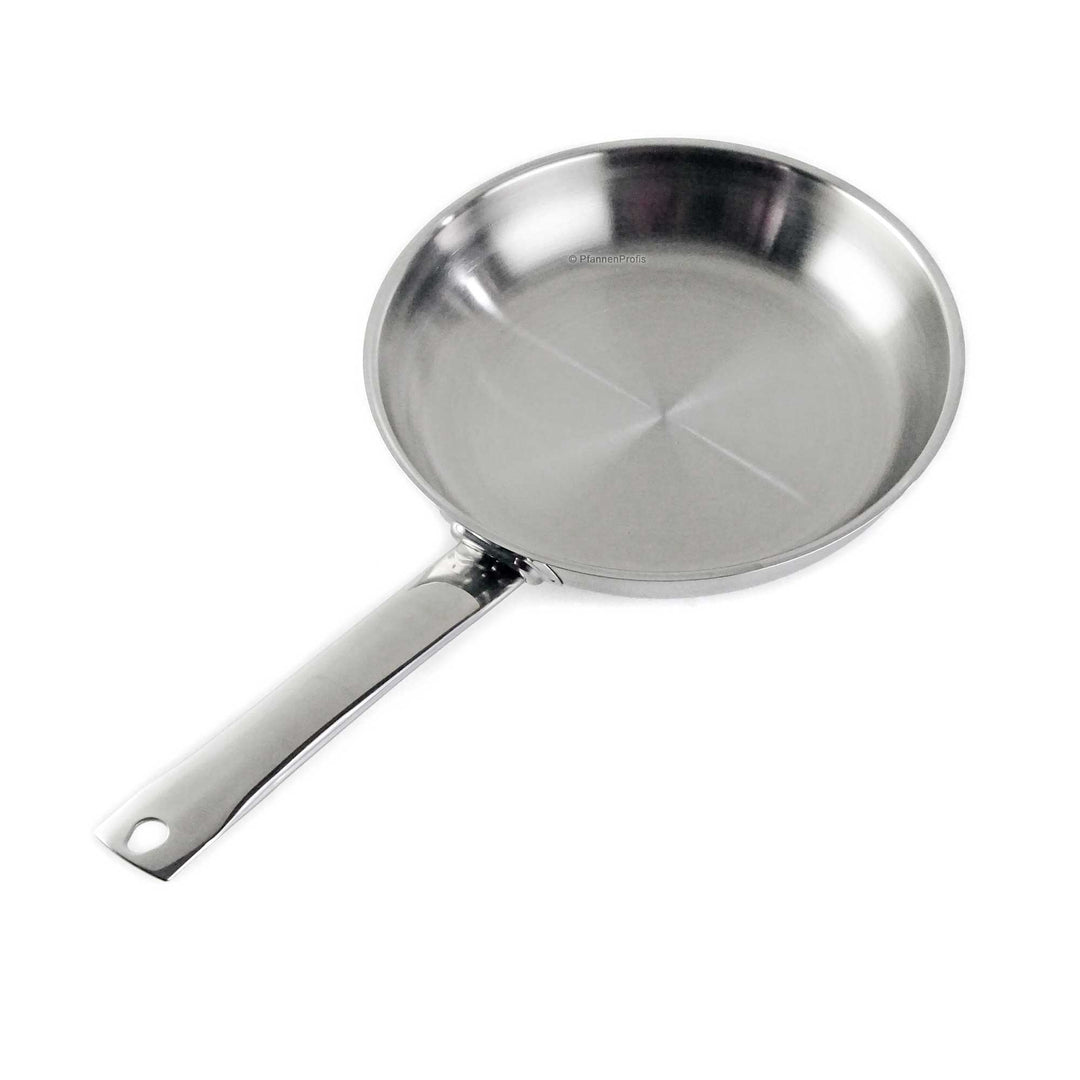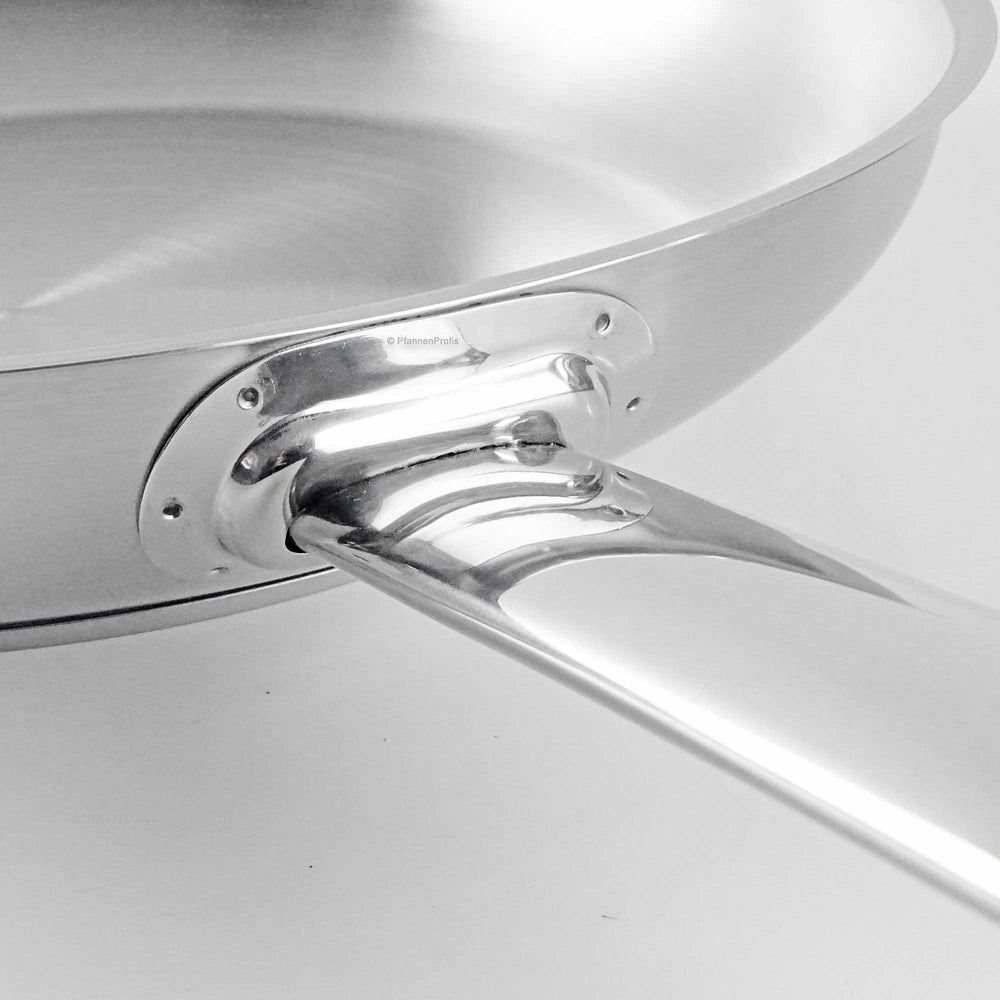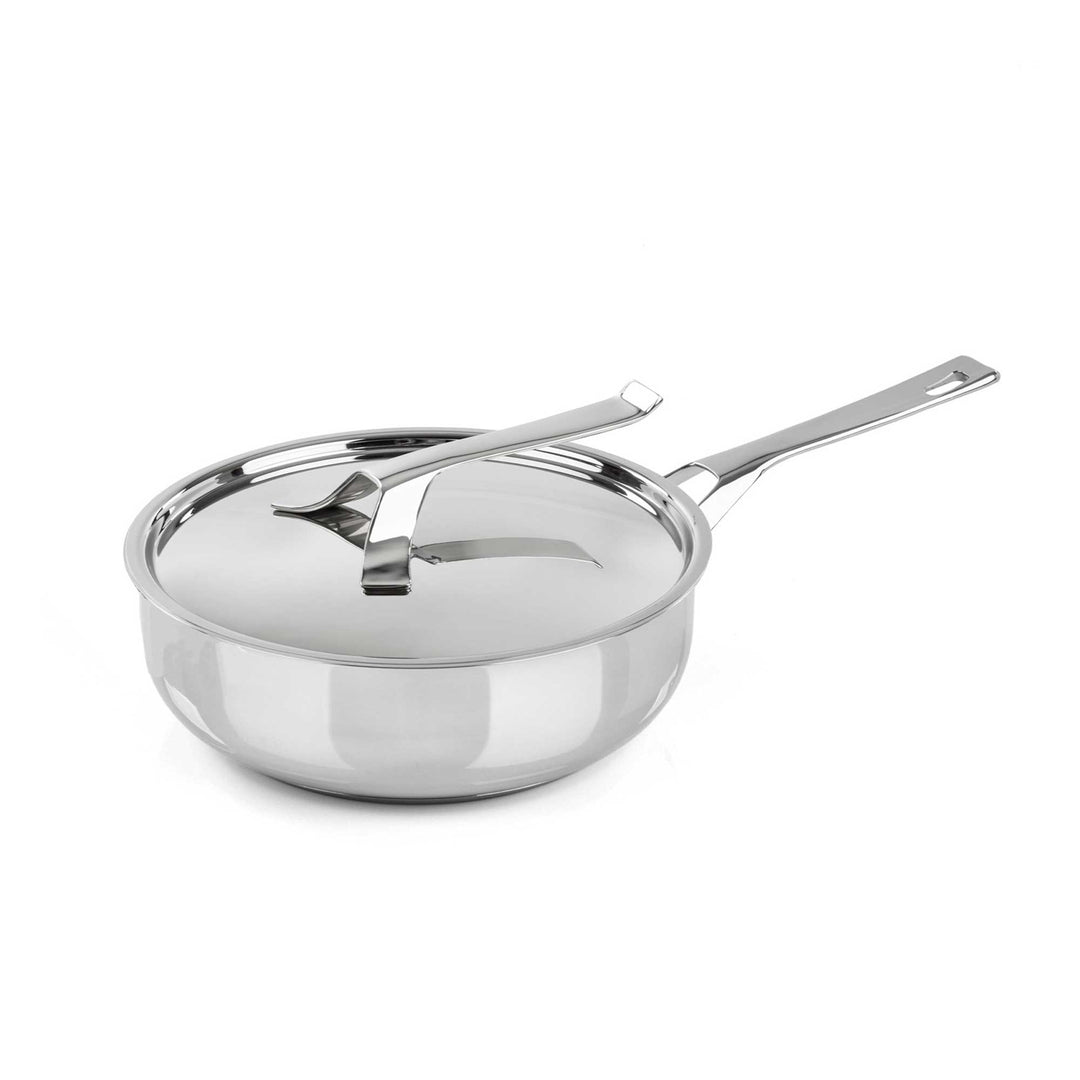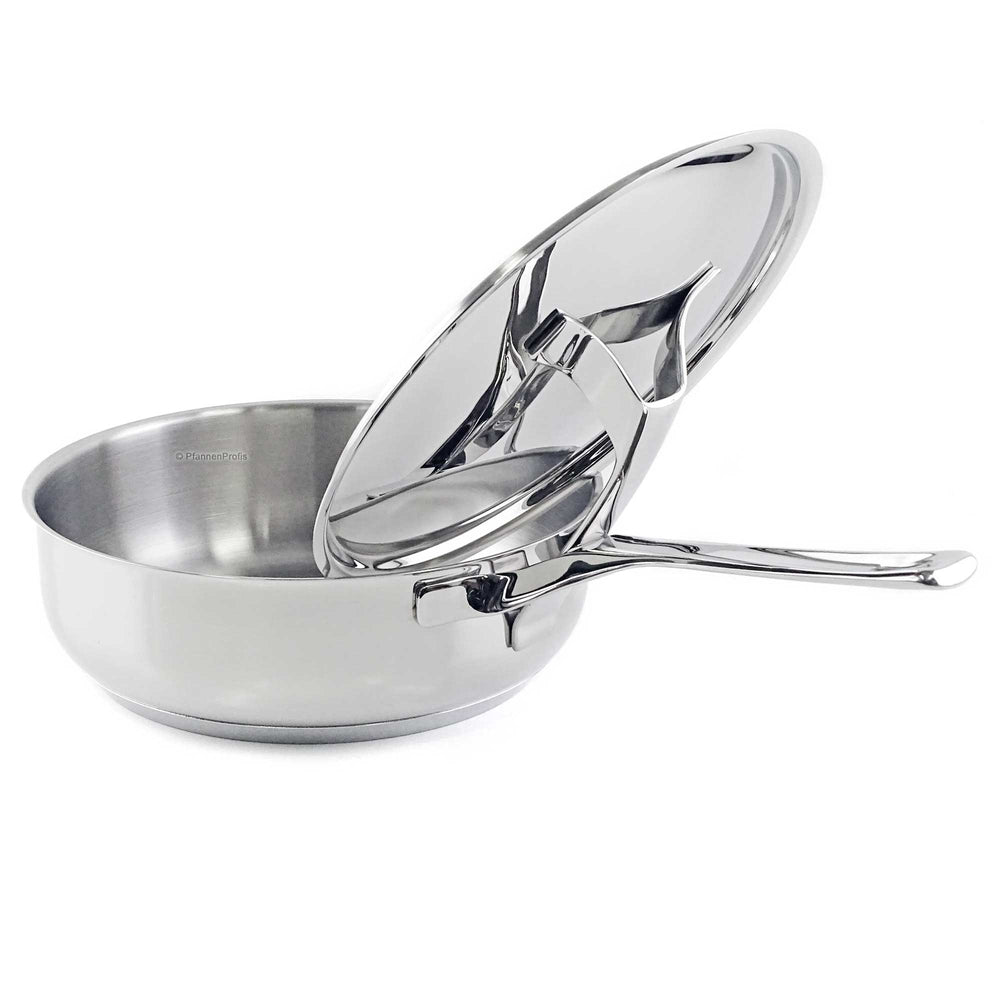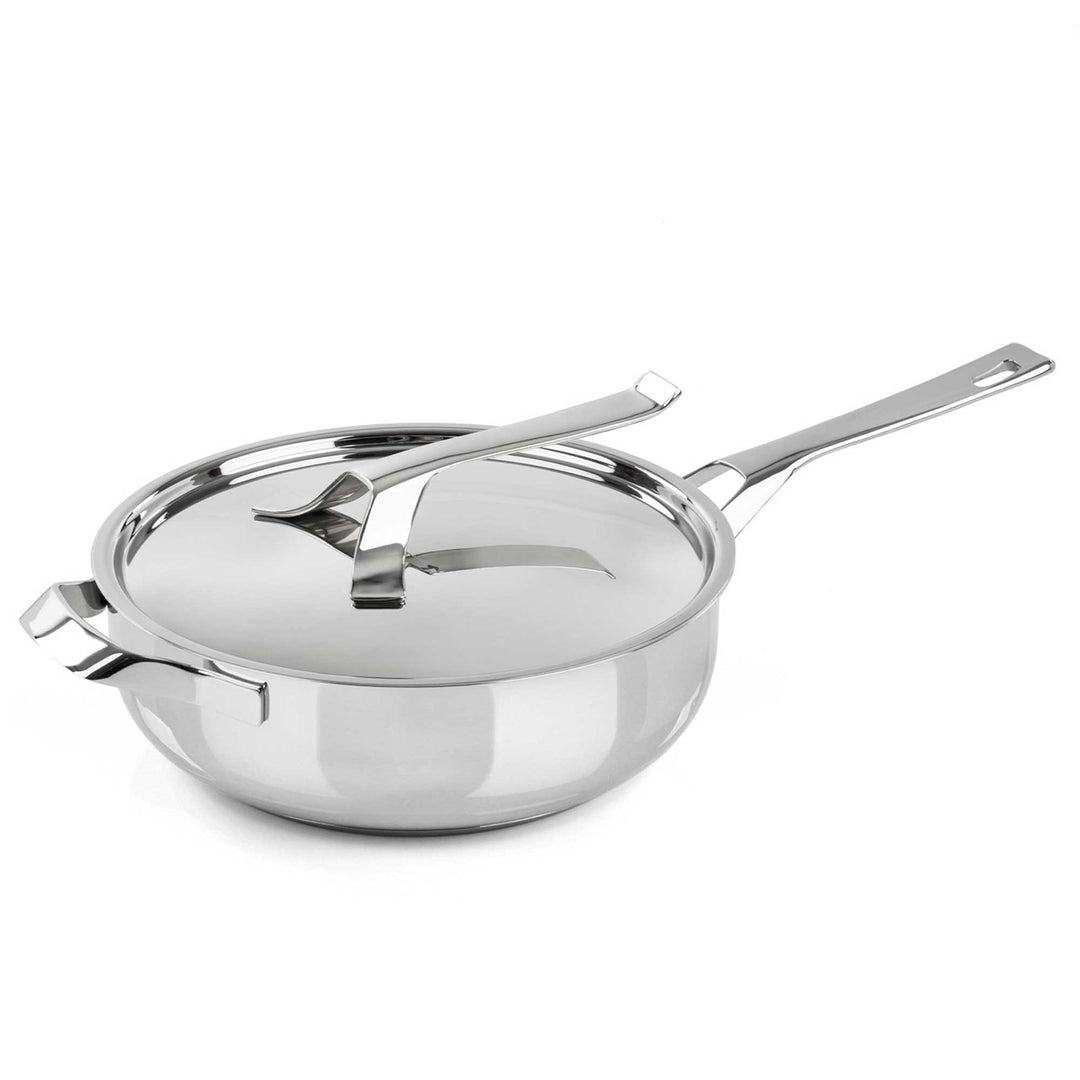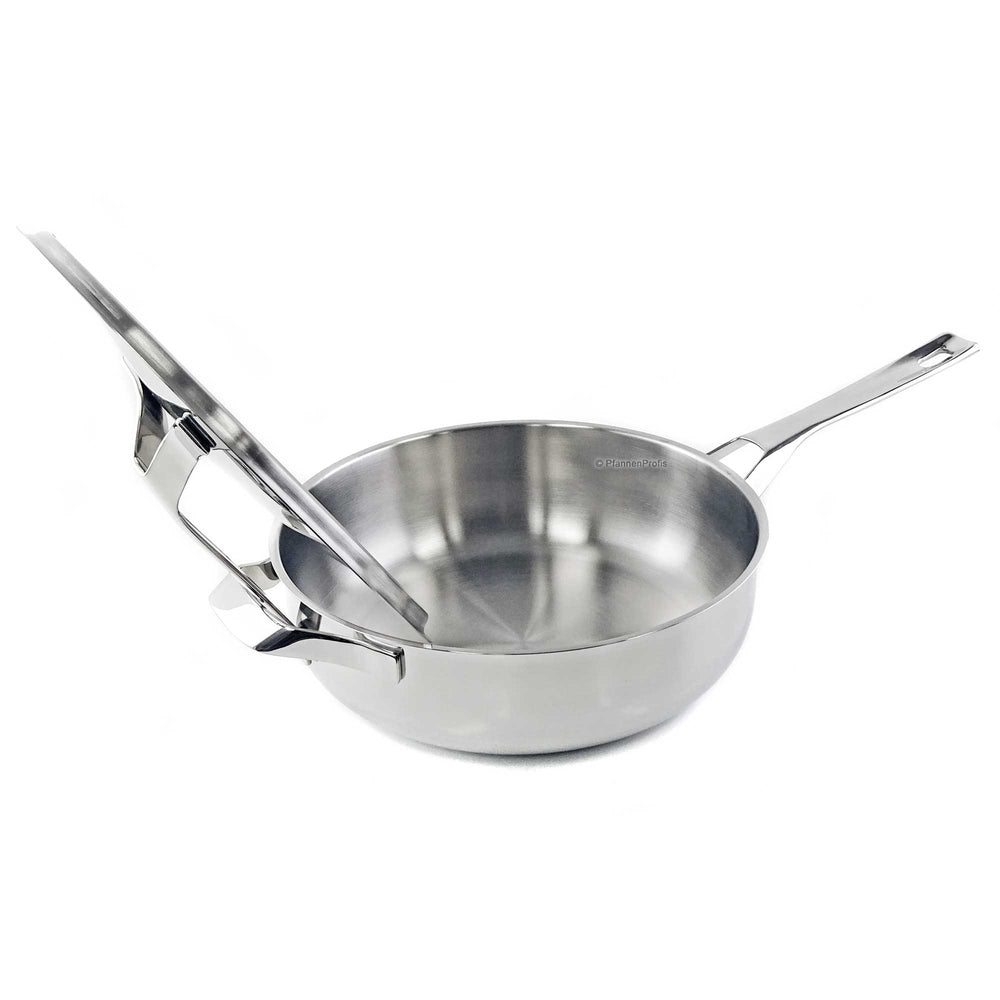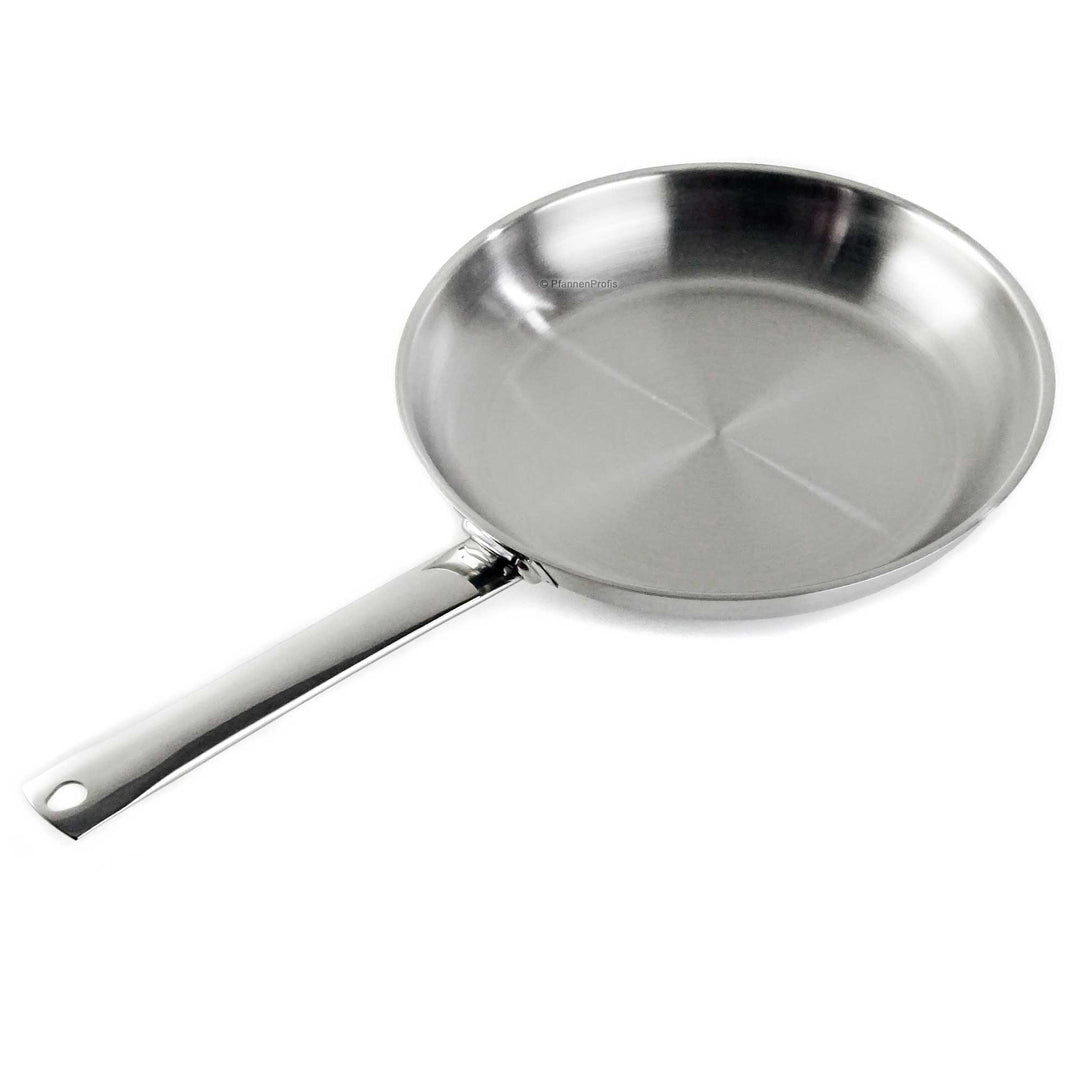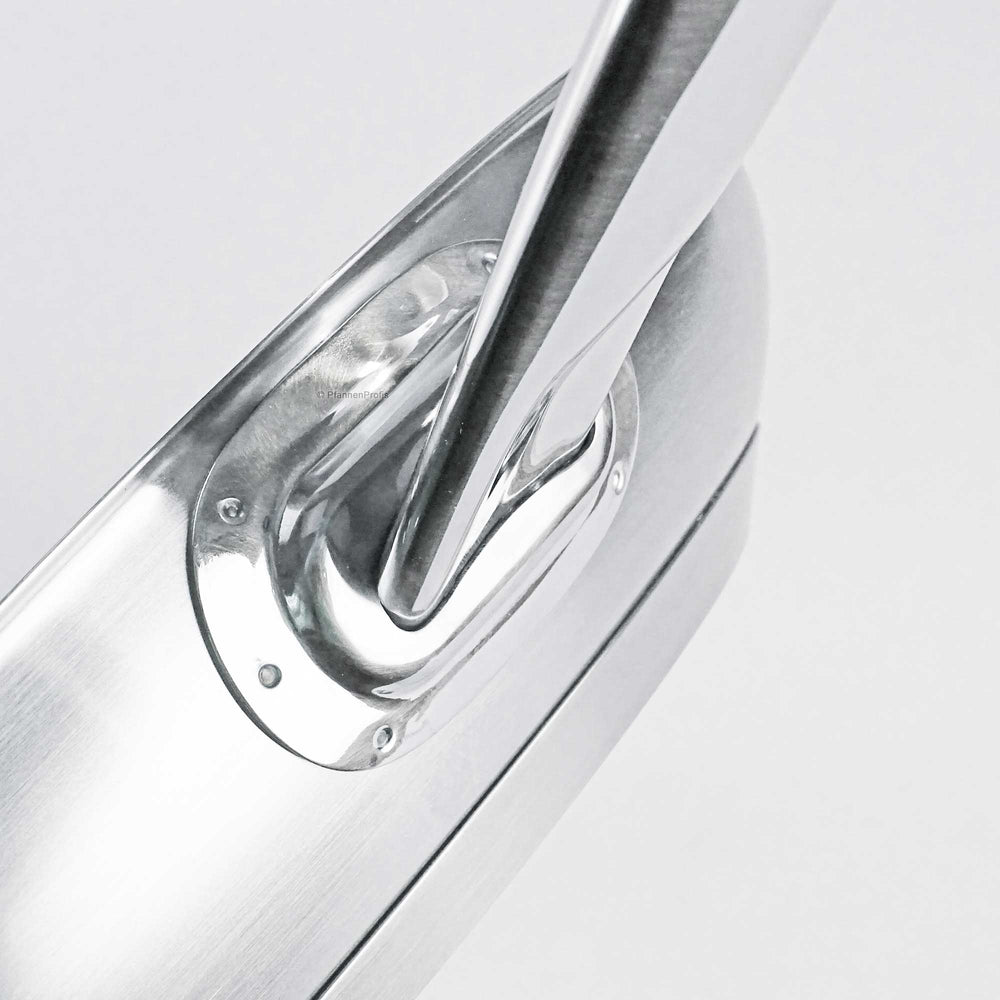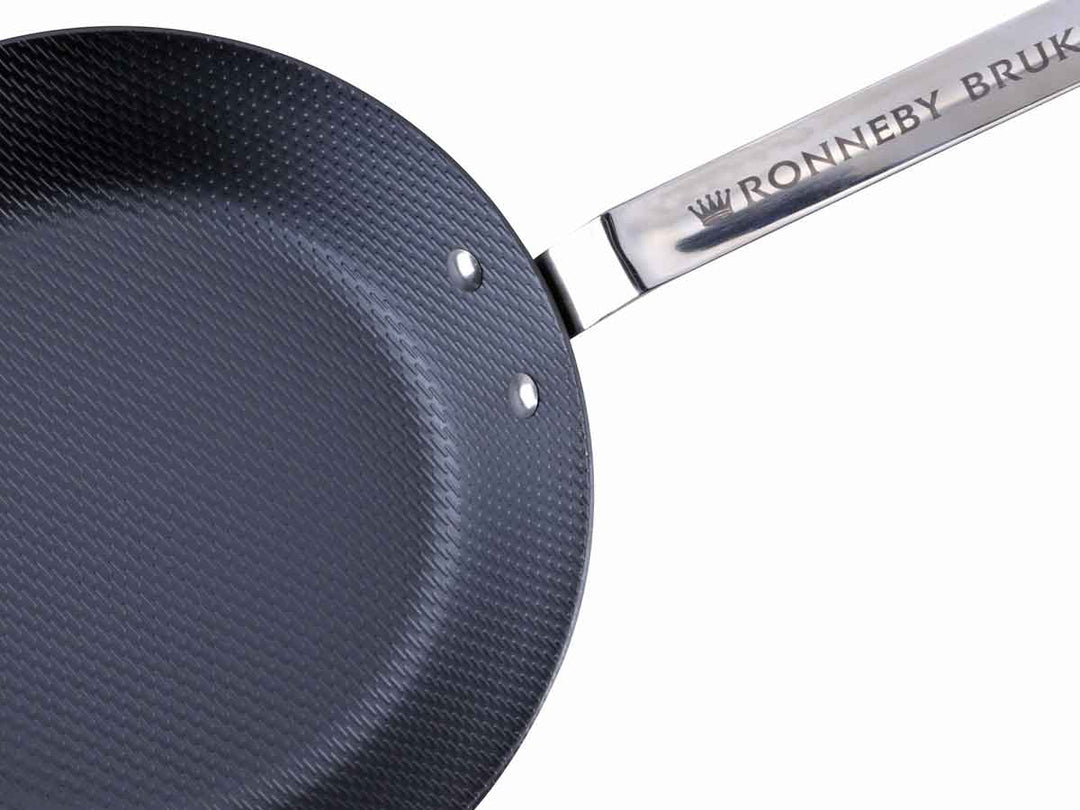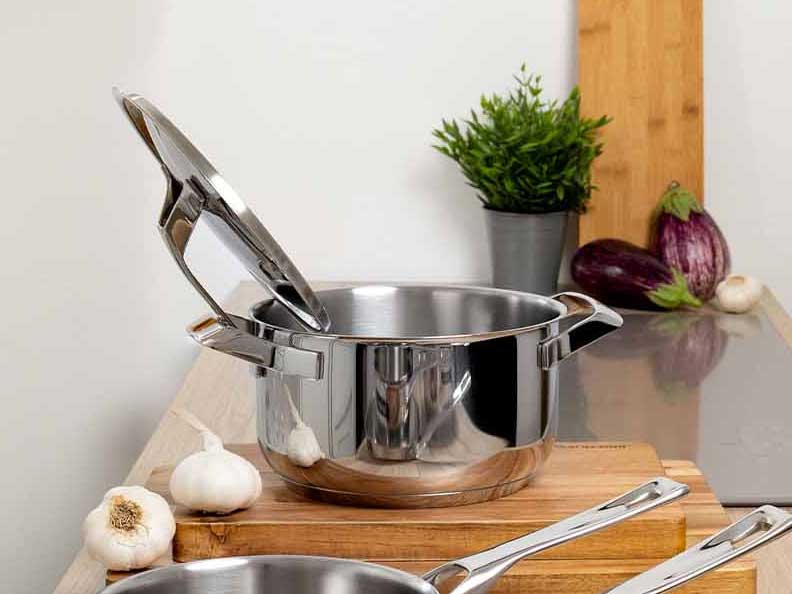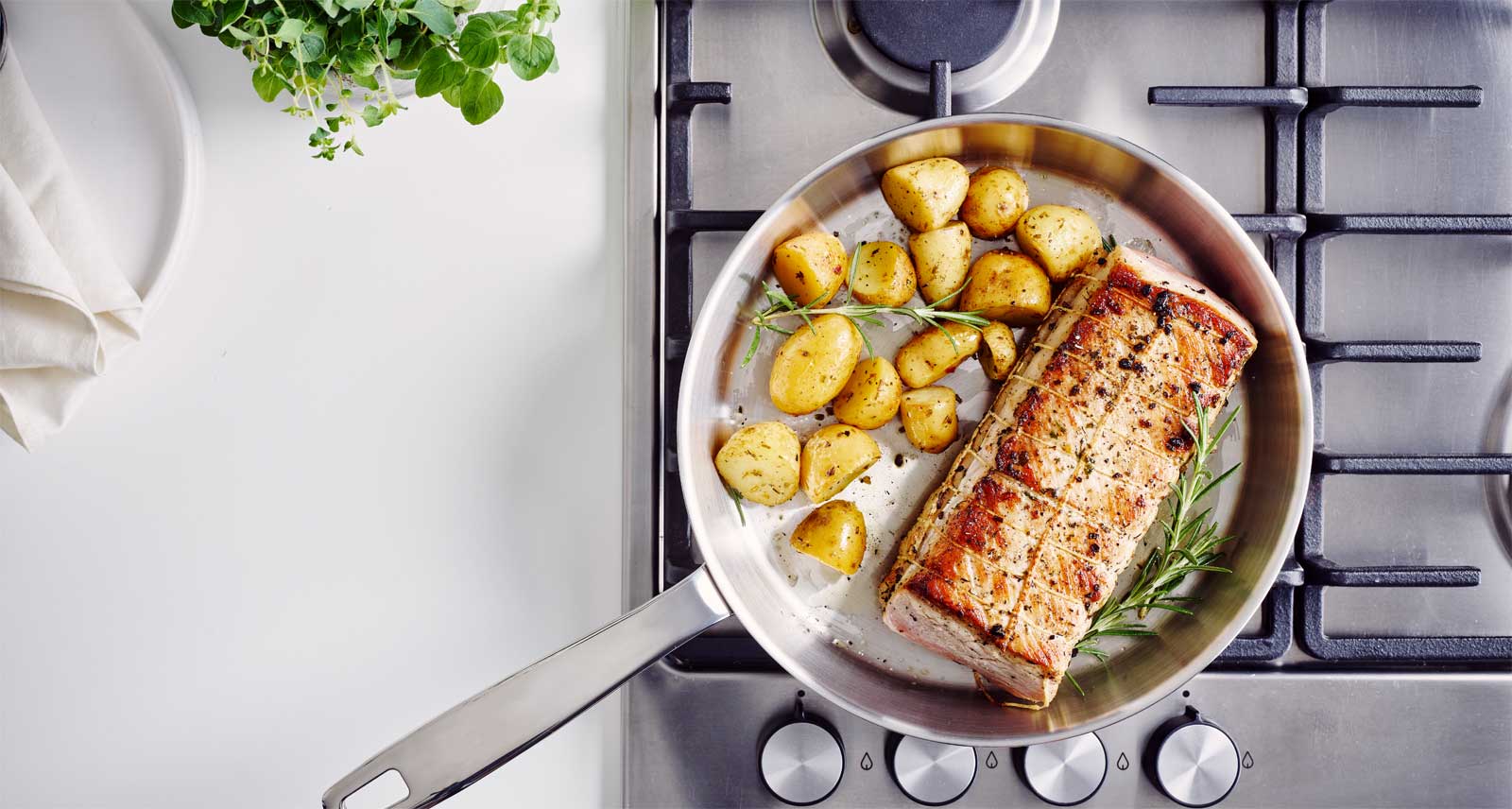
Stainless steel pans without coating
Extremely robust and durable, scratch-resistant, can be heated to high temperatures, perfect for crispy frying, sautéing or even flambéing.
Frequently asked questions about stainless steel pans
Yes, uncoated stainless steel cookware is generally dishwasher-safe. To remove stubborn stains and discoloration, a commercially available stainless steel care product or a mild scouring milk can also be used.
Stainless steel cookware is usually suitable for induction nowadays. For high-quality stainless steel cookware made of 18/10 stainless steel, which is not itself suitable for induction, a base capsule is used for induction cooking or, in the case of 3-/5-ply cookware, an outer layer made of induction-suitable stainless steel, e.g. 18/0 stainless steel.
Edelstahlkochgeschirr ohne Plastikgriffe ist meist ofenfest (Bitte Herstellerhinweise beachten!). Bei Temperaturen über 200°C kann Edelstahl sich farblich an der Oberfläche leicht verändern (sog. Anlassfarbe) und etwas gelblich erscheinen. Das ist harmlos und lässt sich auf Wunsch durch Polieren mit einer Edelstahlpflege entfernen.
Pots and pans made of stainless steel without a coating are extremely robust and virtually scratch-resistant. Please note that metal kitchen utensils, forks or knife edges can of course leave marks on stainless steel. However, unlike coated cookware, these are inconsequential.
Stainless steel pans do not need to be baked on. It wouldn't make much sense to bake them, as uncoated stainless steel cookware has the advantage that it is easy to clean, can go in the dishwasher and, if necessary, can be rubbed with a sponge or scouring cream to get it perfectly clean. A layer of grease burnt onto the surface would severely limit the cleaning options.
When searing meat, it is normal for it to initially stick to the uncoated stainless steel despite the frying fat. As soon as a nice crust has formed on the meat (Maillard reaction), it comes off on its own and can be lifted from the surface and turned without any problems.
Make sure that the oil/fat in the pan is sufficiently hot before placing the meat in it, as the water that escapes from the outer layer of the meat in the hot fat evaporates quickly and creates a kind of cushion on the frying surface, which reduces sticking.
Uncoated stainless steel pans are less suitable for low-fat frying, as uncoated stainless steel pans have no non-stick effect.
Fat is also a heat transfer medium that bridges even small cavities between the food and the frying surface, thus ensuring a better frying result.
For a low-fat kitchen, it is therefore better to dab the food with kitchen paper after frying than to skimp on fat when frying.
Stainless steel without a coating has no non-stick effect. However, when frying non-sensitive foods (meat, vegetables), this is usually not a disadvantage if handled correctly.
However, when frying very delicate foods (e.g. egg dishes, breaded foods, pasta etc.), it may make more sense to use a coated pan (non-stick / ceramic).
In stainless steel cookware, 3-ply or 5-ply stands for a 3- or 5-layer material composite of stainless steel and aluminum. Aluminum is an extremely good conductor of heat, but is relatively soft and not particularly resistant. Stainless steel, on the other hand, is very hard and resistant, but is a very poor conductor of heat.
3-ply/5-ply multi-layer material combines the respective material advantages of stainless steel and aluminum: one layer of aluminum (with 3-ply) or three layers of aluminum (with 5-ply) in the fully insulated core ensures heat distribution throughout the cookware right up to the rim. The stainless steel inside and out ensures robustness and durability.


